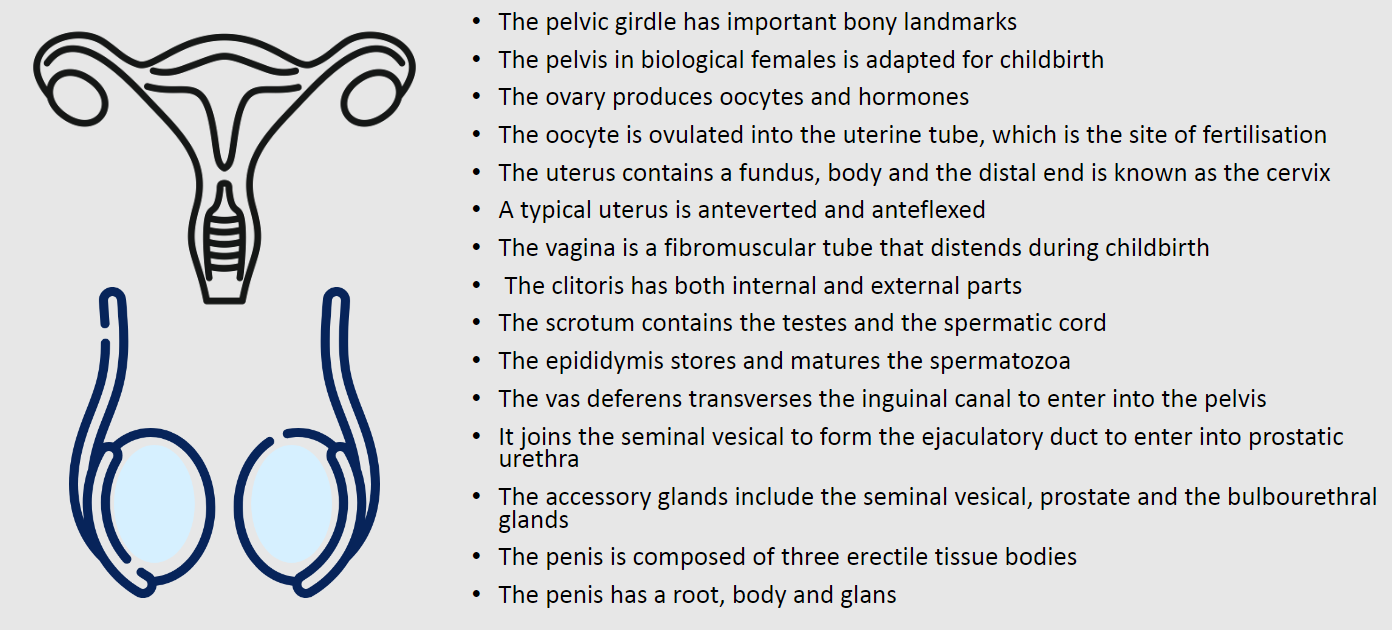What is the composition of the bony pelvis? (4)
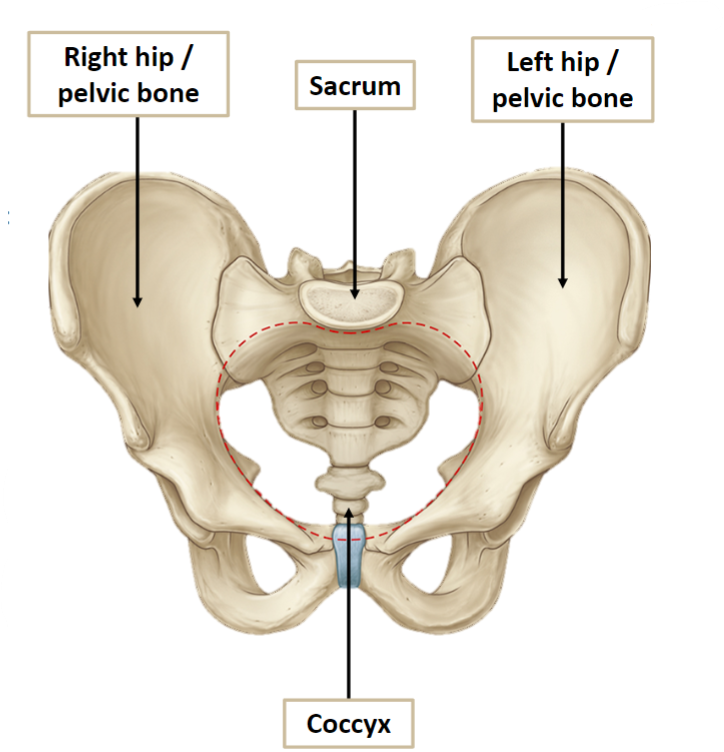
Sacrum
Coccyx
Right hip/pelvis bone
Left hip/pelvis bone
What are the functions of the bony pelvis? (4)
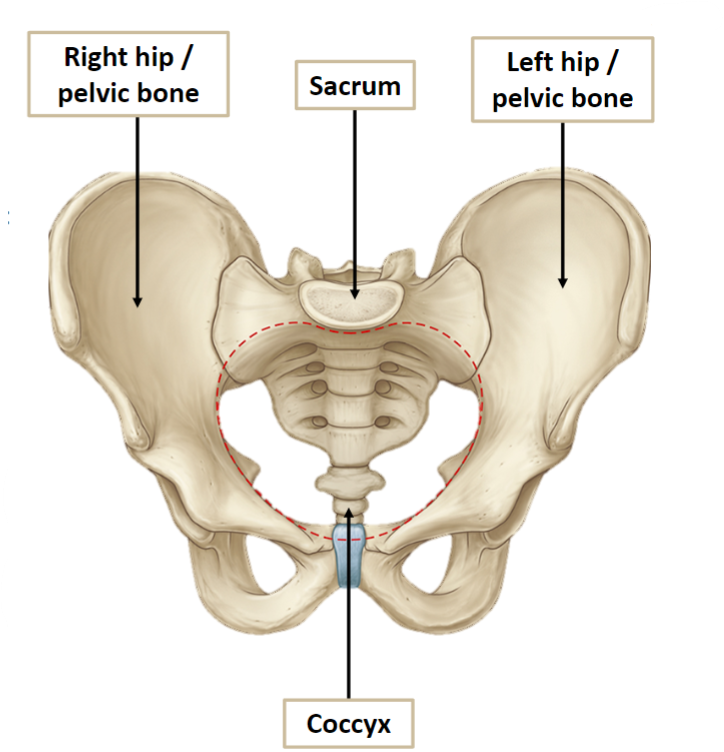
Transmits the body's weight from the vertebral column to the femur
Contains, protects, and supports the pelvic organs (bladder, rectum, anal canal, and reproductive tracts)
Provides attachment for the lower limbs and trunk
Anchors the roots of external genitalia
What are the anatomical differences in the pelvis between biological males and females, especially in relation to childbirth? (3)
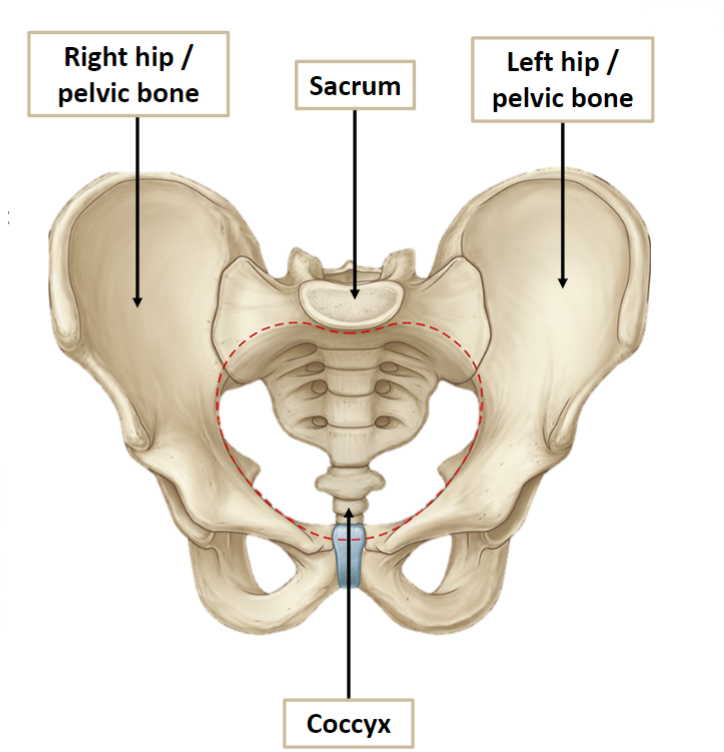
The female pelvis is wider and has a larger pelvic inlet to accommodate childbirth.
The shape of the female pelvis is more circular, while the male pelvis is more heart-shaped.
The female sacrum is shorter and less curved compared to the male sacrum.
What organs are included in the reproductive system for males and females? (3 marks each)
Male: testes, penis, prostate gland
Female: ovaries, uterus, vagina
What are the main structures of biological male external genitalia? (2)
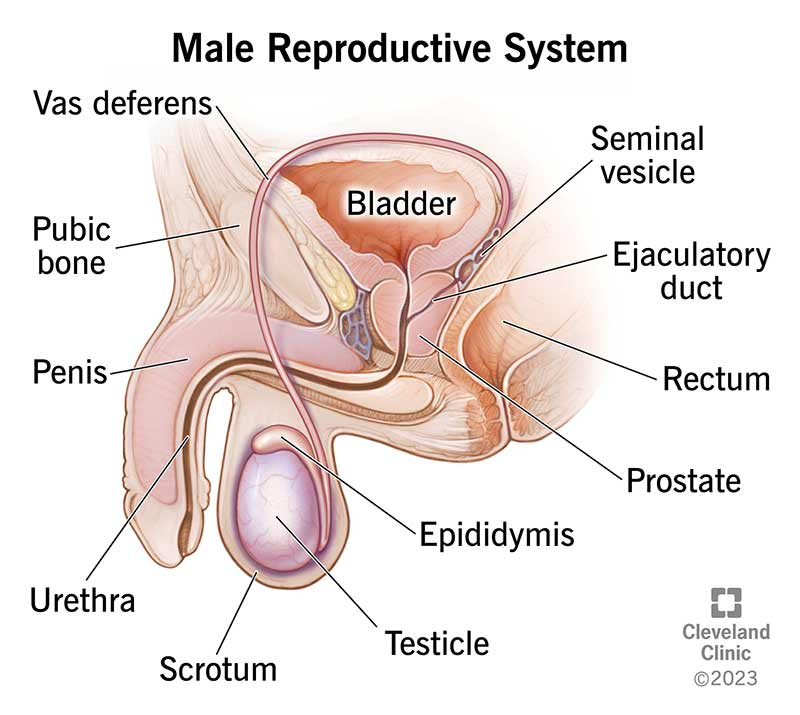
Penis
Scrotum
What are the structures of biological female external genitalia? (3)
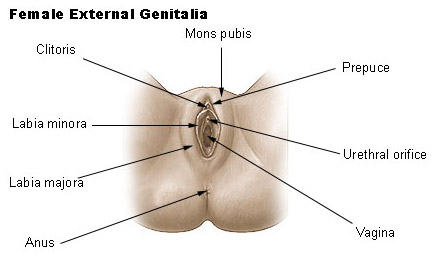
Vulva
Clitoris
Labia (majora and minora)
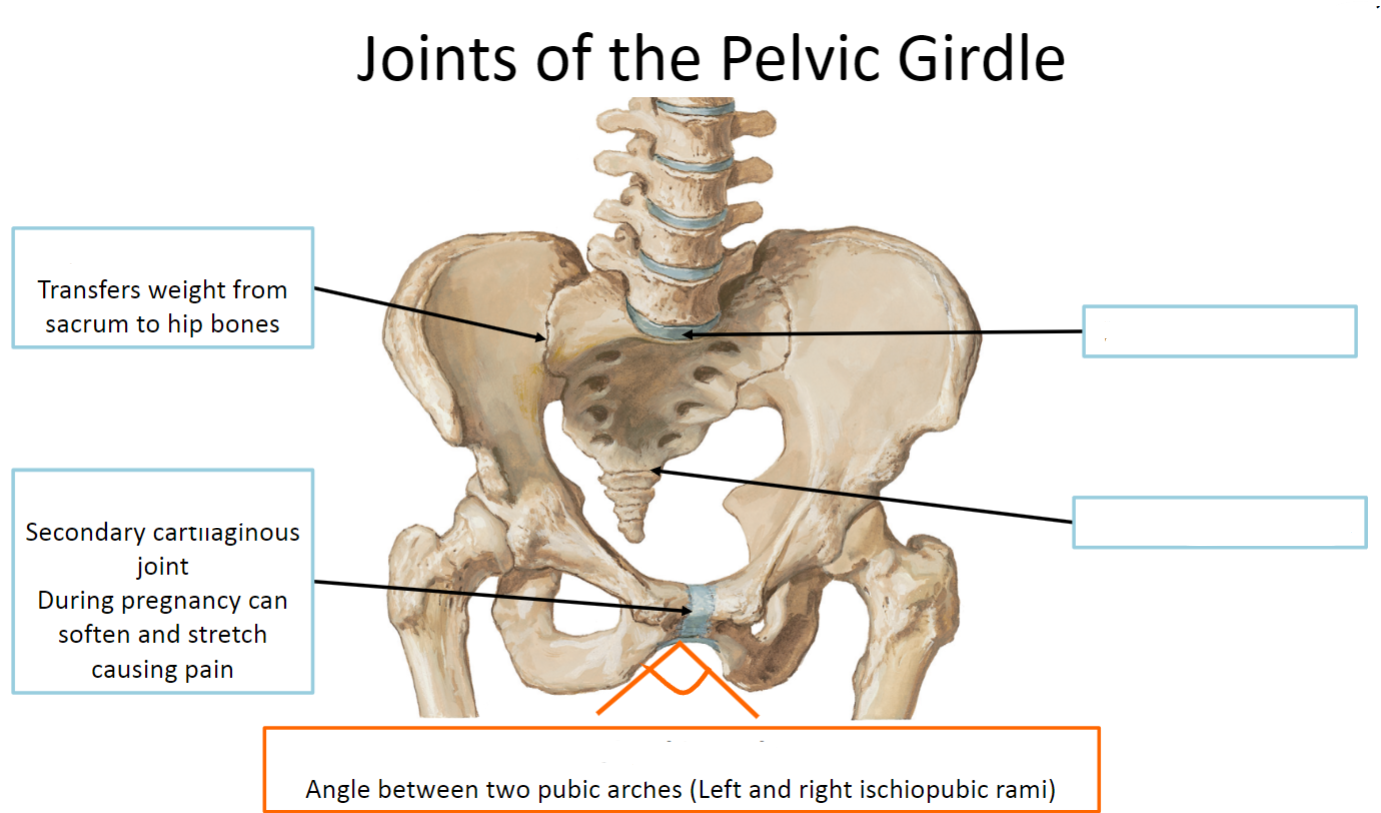
Label the joints of the Pelvic Girdle (5)
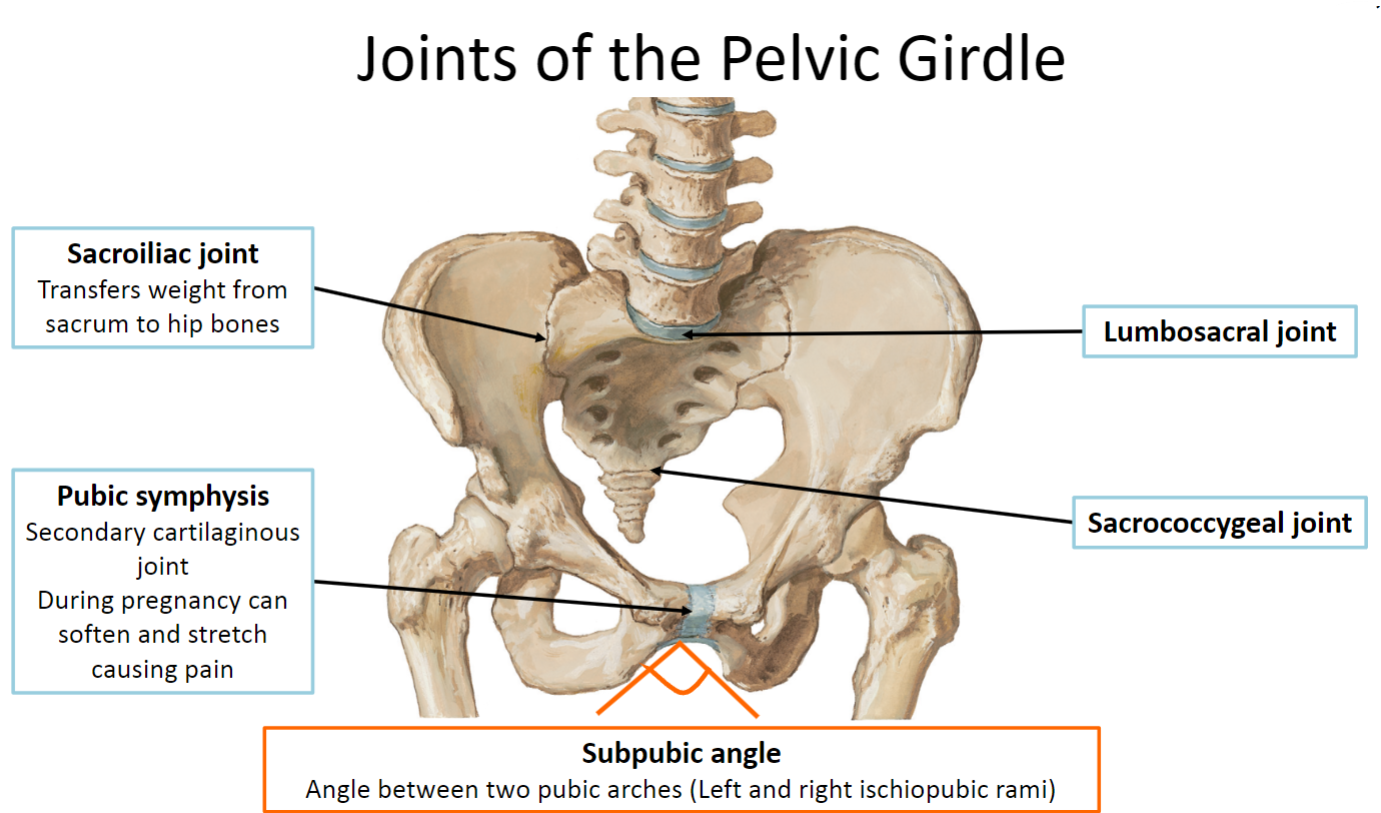
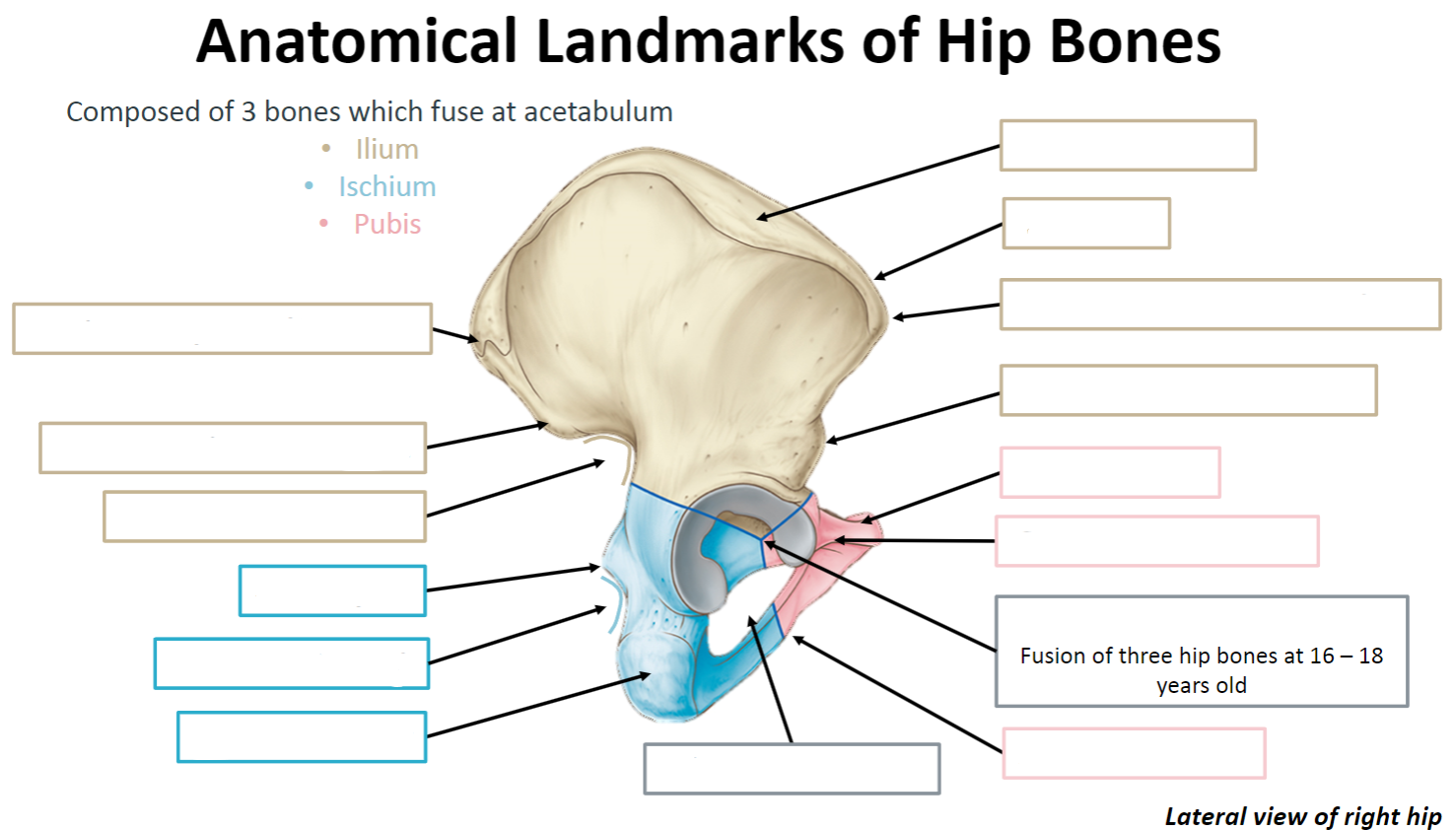
Name the anatomical landmarks of the hip bone (15)
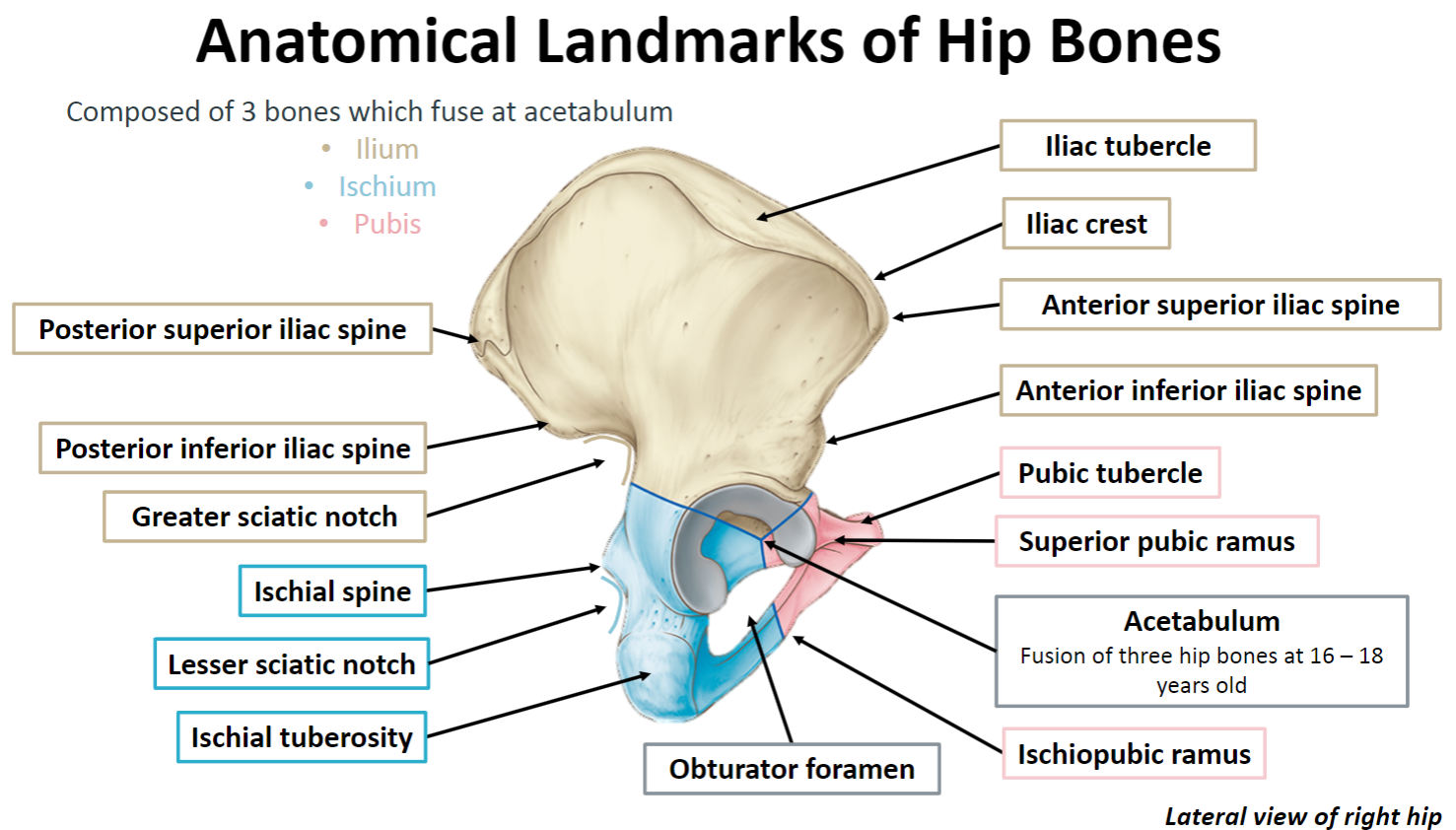
What are the three bones that compose the hip bone? (3)
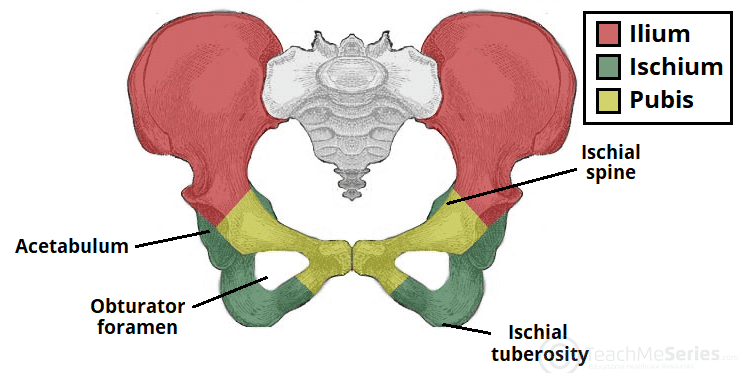
Ilium
Ischium
Pubis
How do the three bones of the hip bone come together? (1)
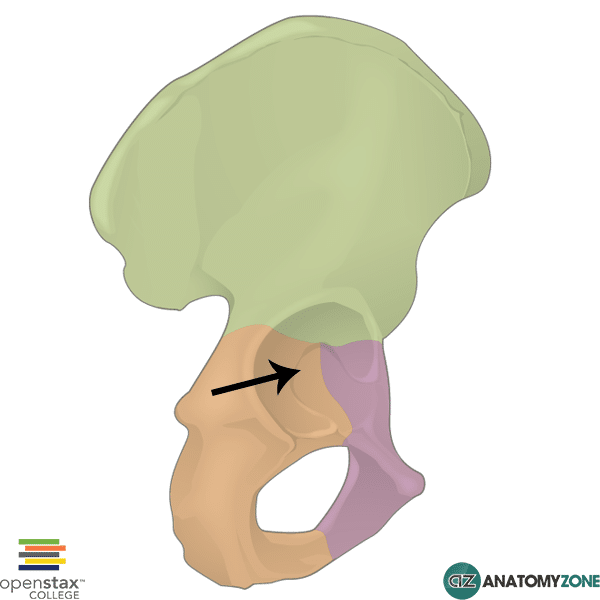
They fuse at the acetabulum.
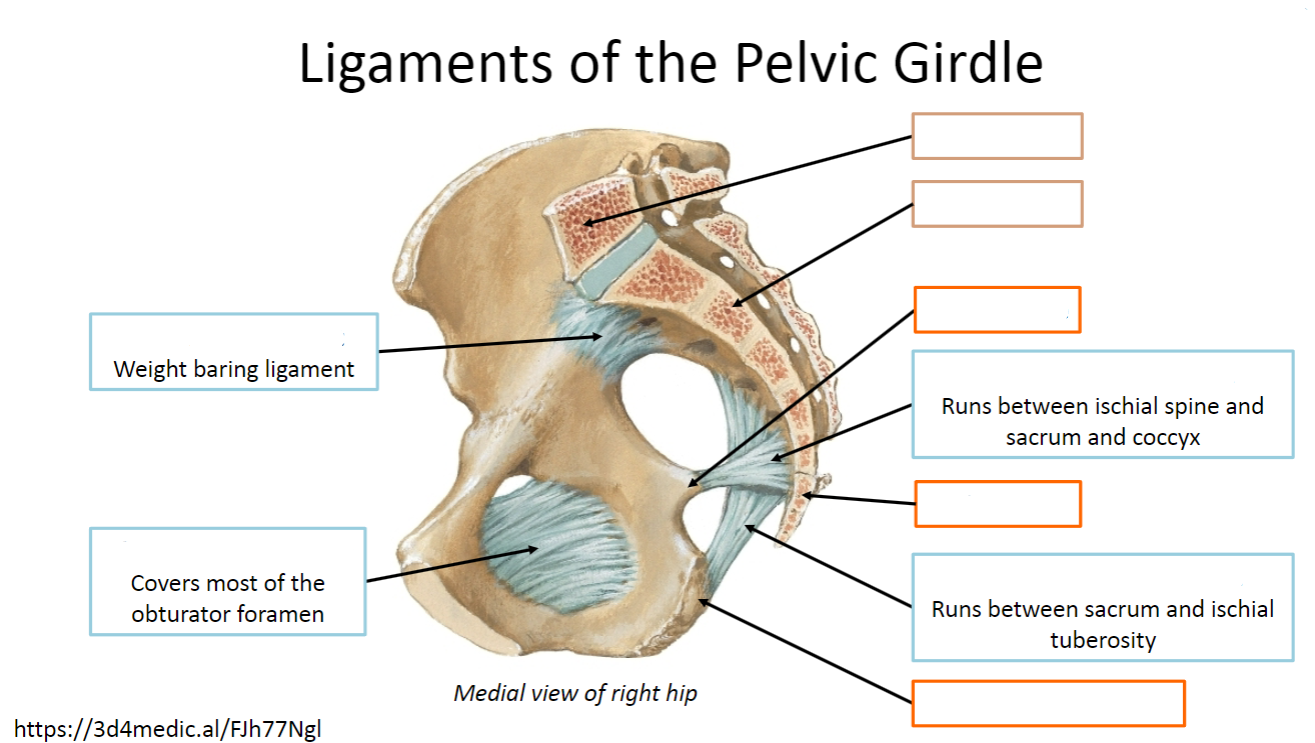
Label the ligaments of the Pelvic Girdle (9)

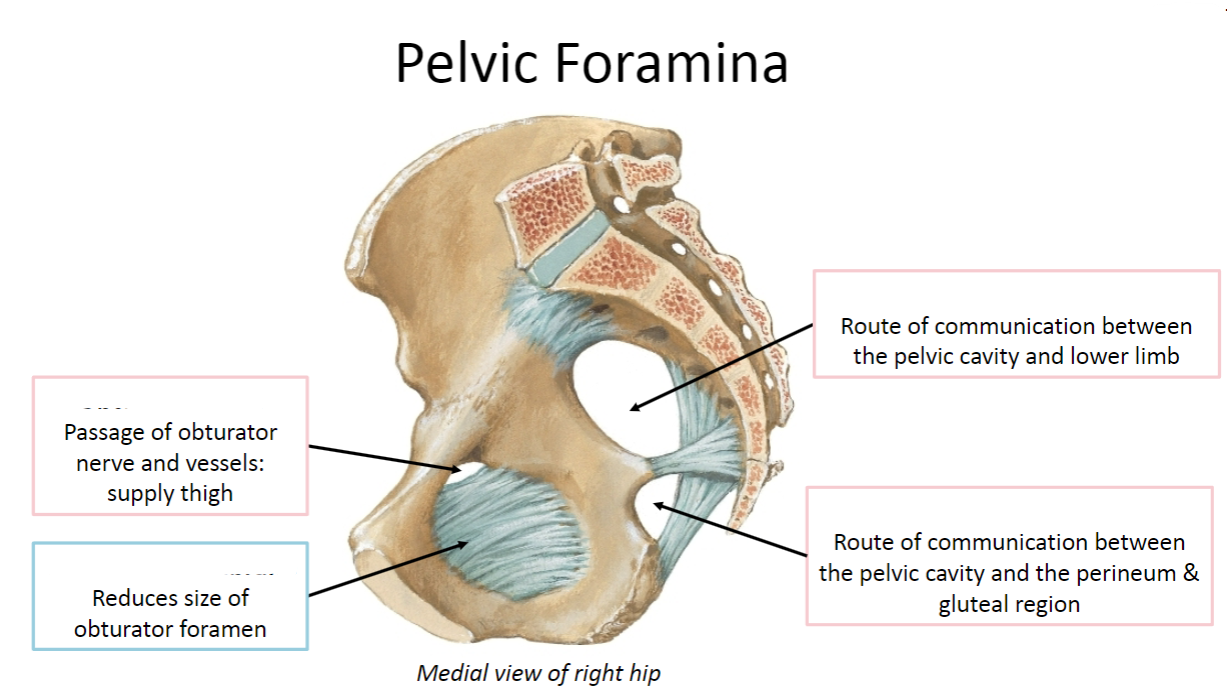
Label the pelvic foramina (4)
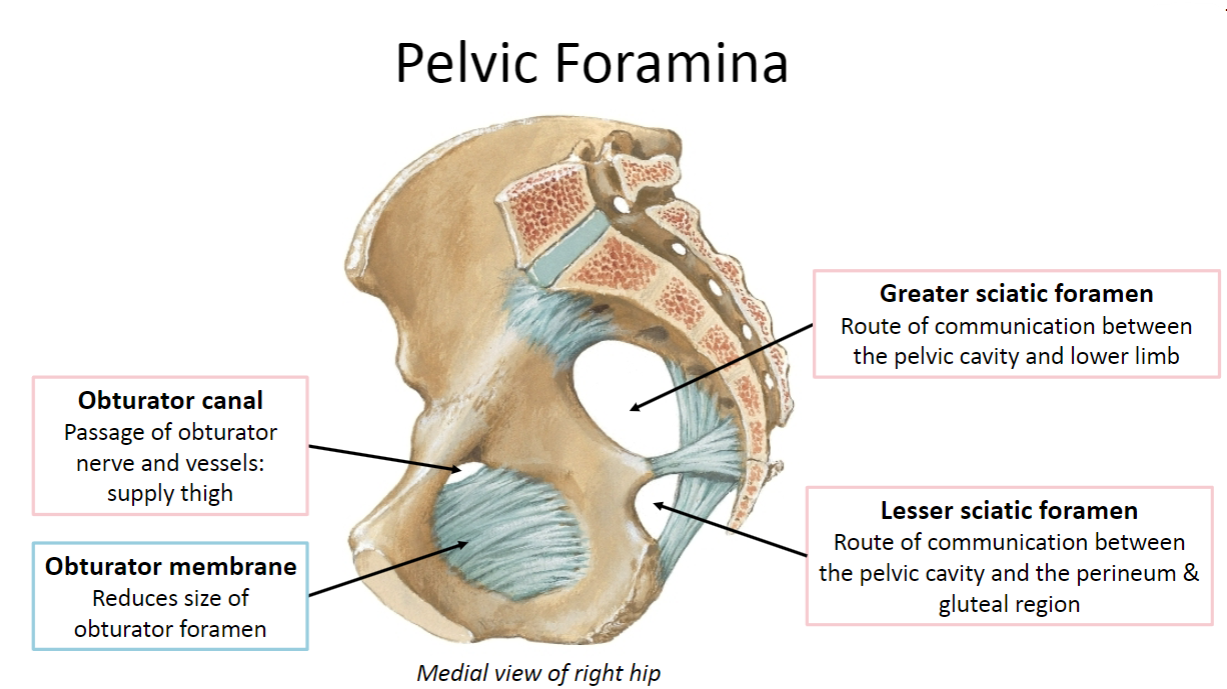
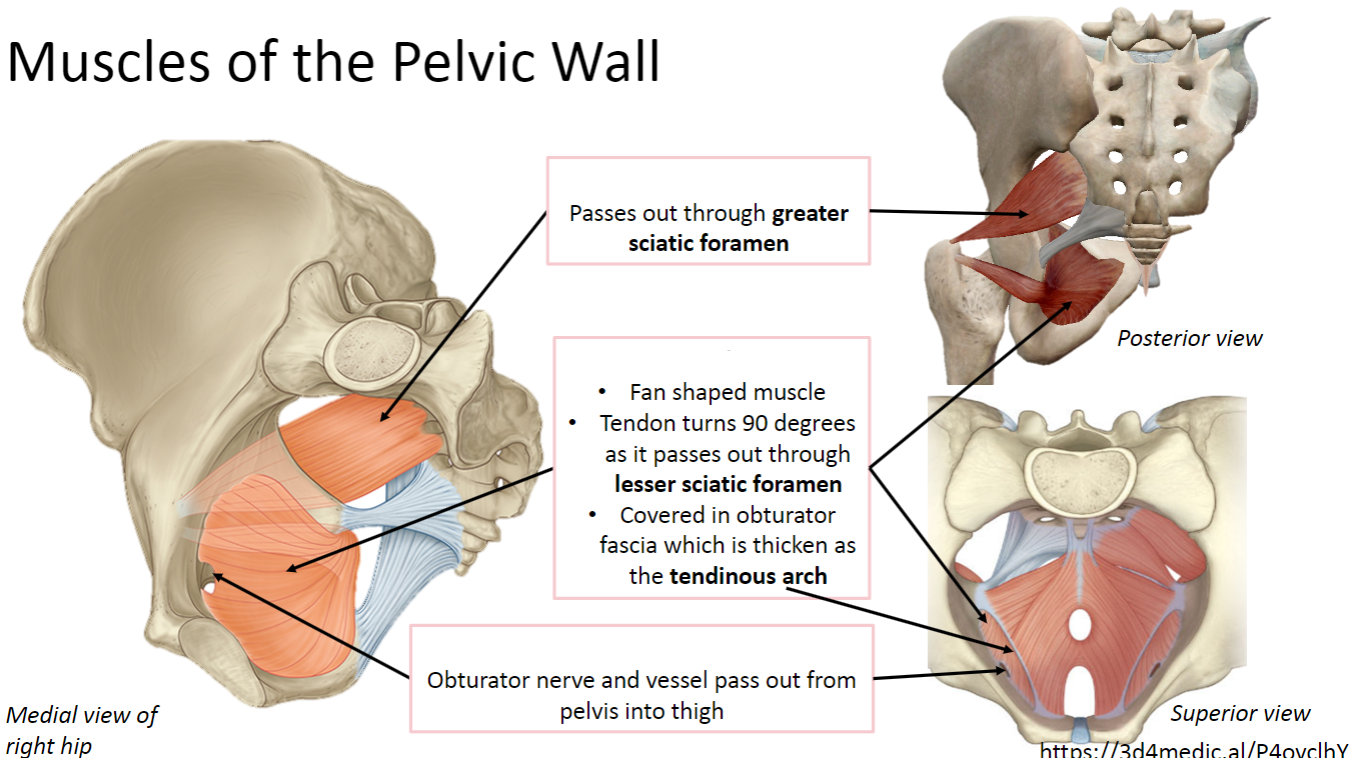
Label the Muscles of the Pelvic Wall (3)
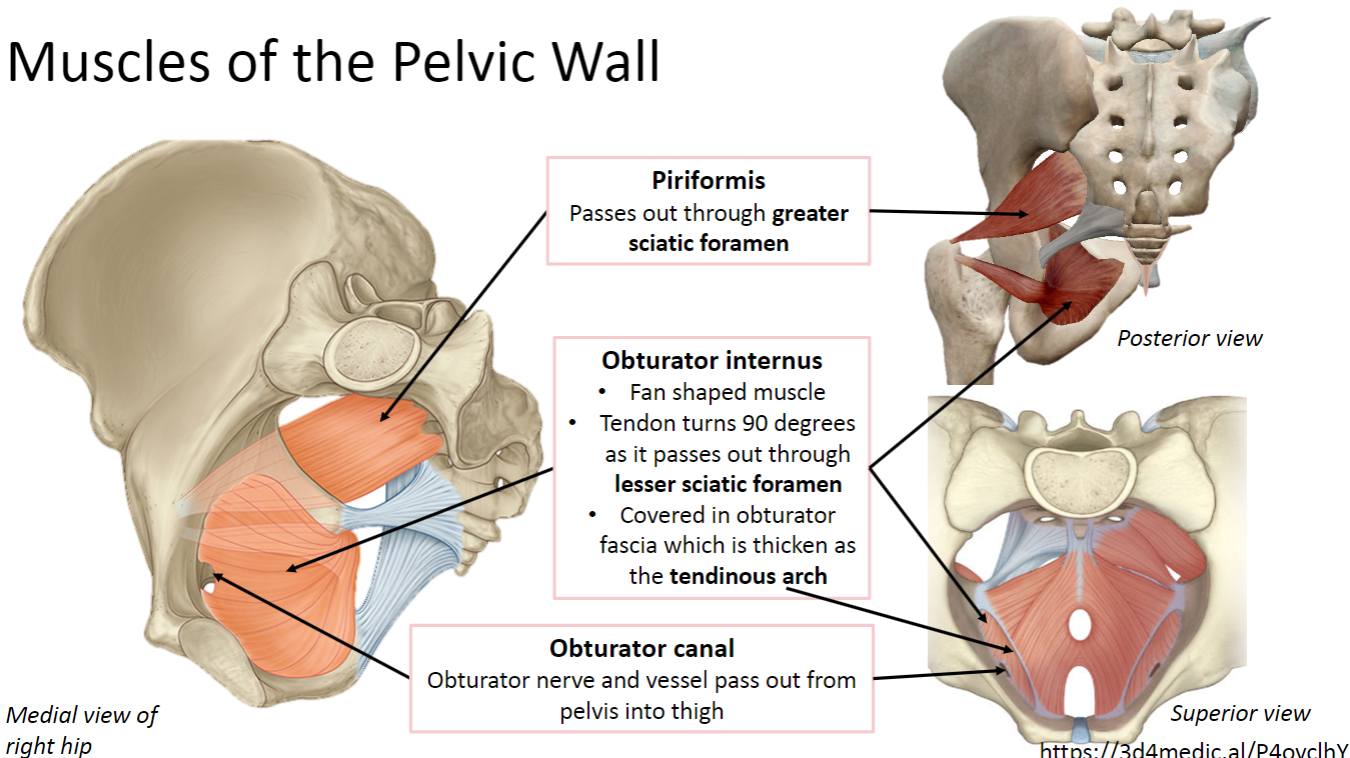
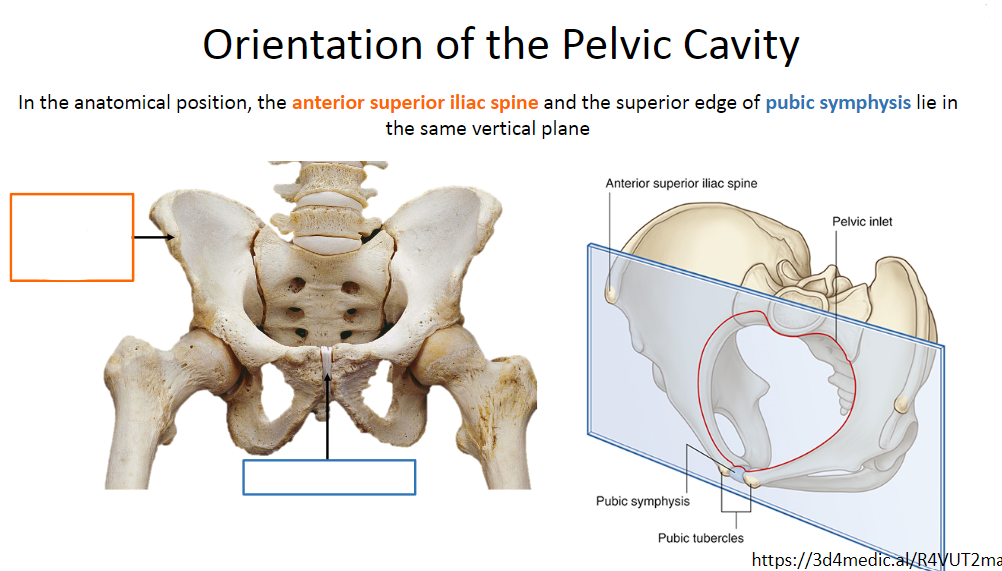
Label these parts of the pelvic cavity linked to orientation (2)
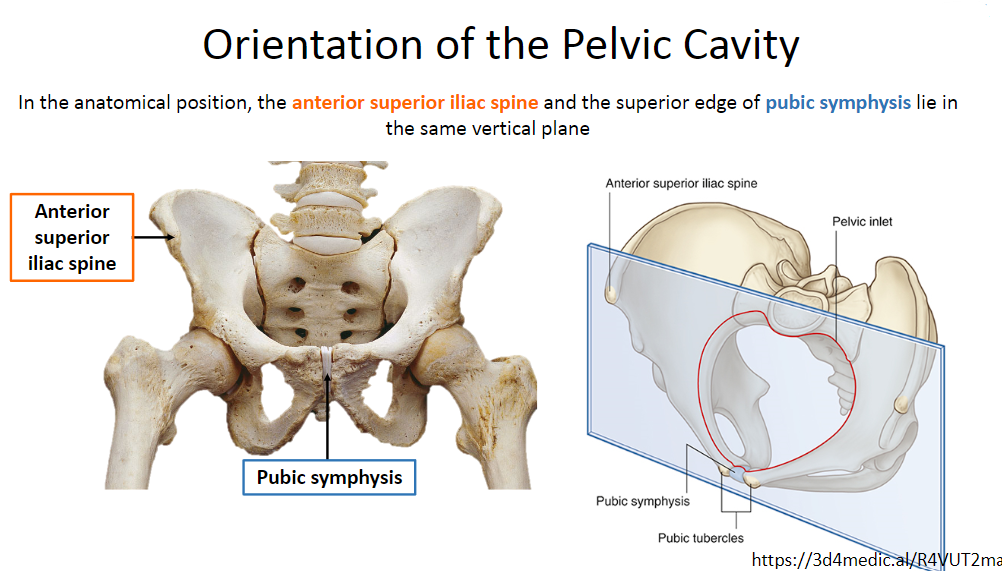
What is the pelvic inlet and its significance during birth? (1)
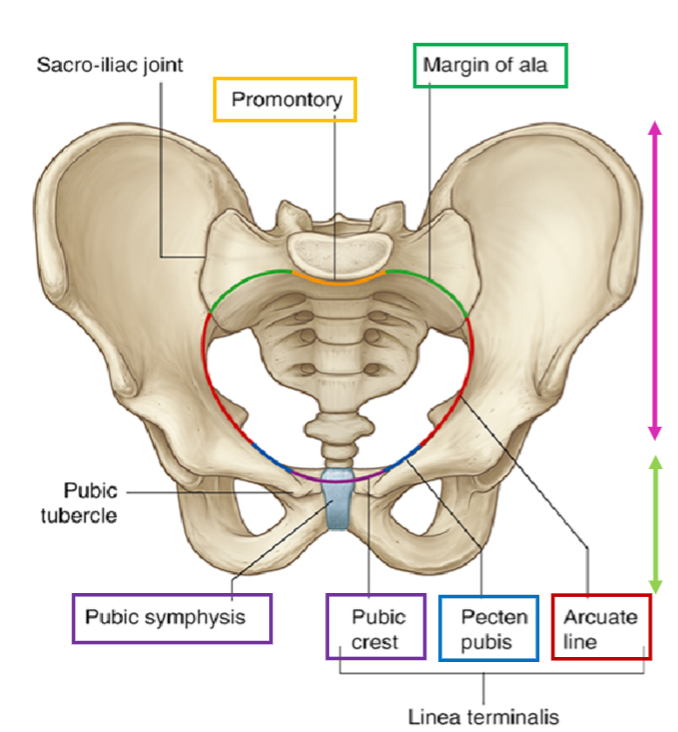
The pelvic inlet is the area through which the infant's head passes during birth.
What is the bony boundary of the pelvic inlet demarcated by? (5)
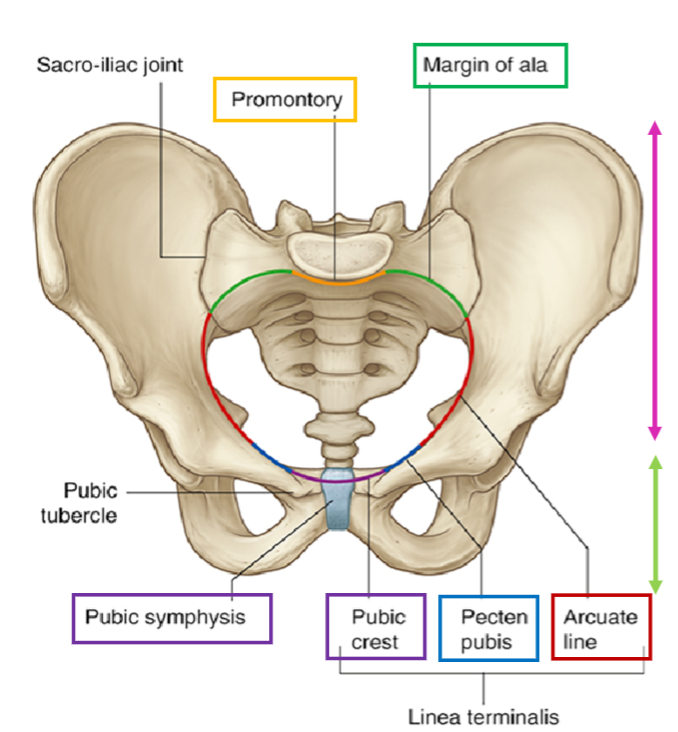
Linea terminalis of the pelvis
Pubic symphysis
Pubic crest
Pectin pubis (ridge of superior pubic ramus)
Arcuate line of ilium
Margin of the ala of the sacrum
Sacral promontory
How does the pelvic inlet divide the pelvic girdle? (2)
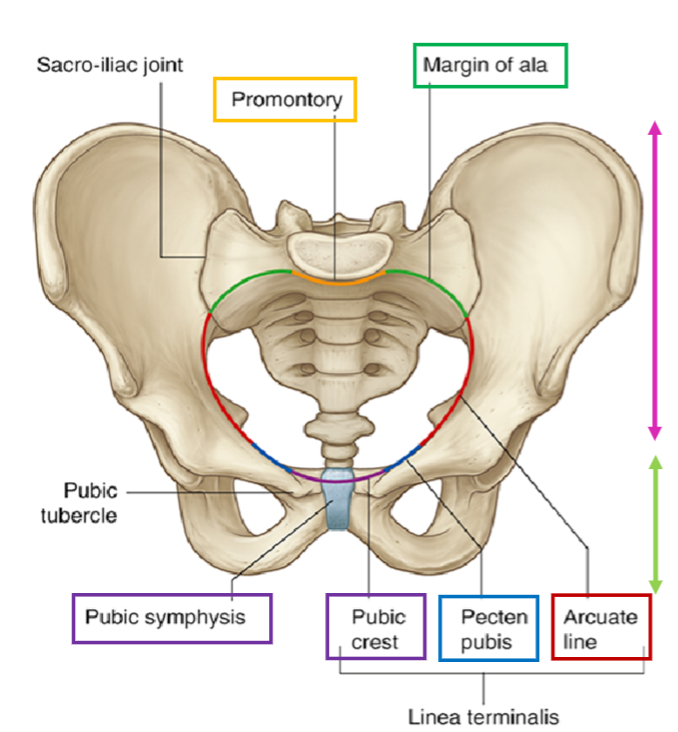
Greater (false) pelvis superiorly
Lesser (true) pelvis inferiorly
What is the greater (false) pelvis? (1)
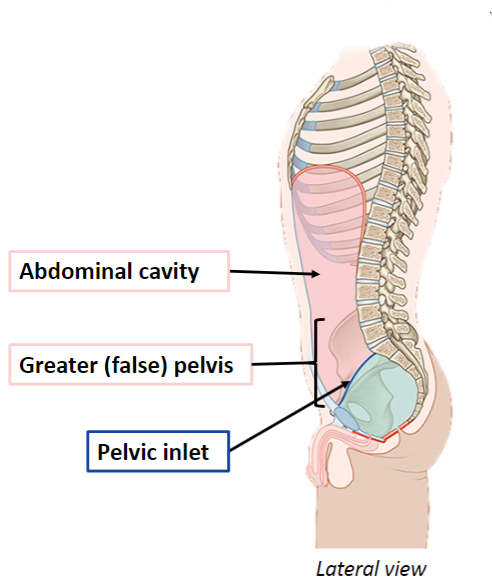
The region above the pelvic inlet.
What are the anatomical boundaries of the greater (false) pelvis? (3)
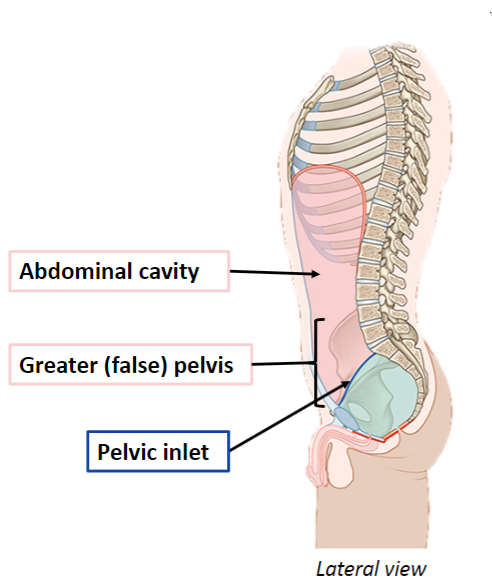
Posteriorly: Formed by the lower part of the L5 vertebra and the S1 vertebra, which are part of the lumbar and sacral spine. These structures provide support and connection between the spine and pelvis.
Laterally: The flared iliac fossae, which are the wide, concave surfaces of the ilium bones. These create the broad, wing-like sides of the greater pelvis.
Anteriorly: The lower part of the anterior abdominal wall, which includes muscles like the rectus abdominis and lower abdominal structures.
What cavity is the greater (false) pelvis considered a part of? (1)
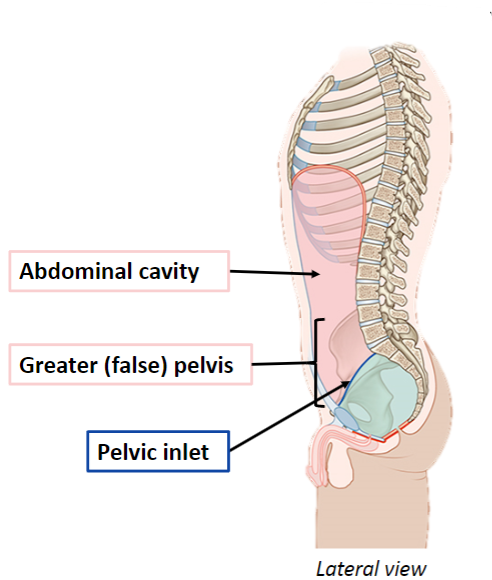
It is considered part of the abdominal cavity.
What structures are contained within the greater (false) pelvis? (2)
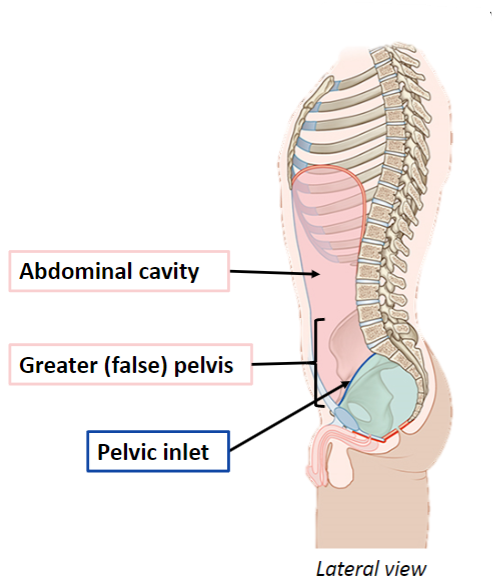
Sigmoid colon
Loops of ileum
What is the role of the greater (false) pelvis in pregnancy and childbirth? (1)
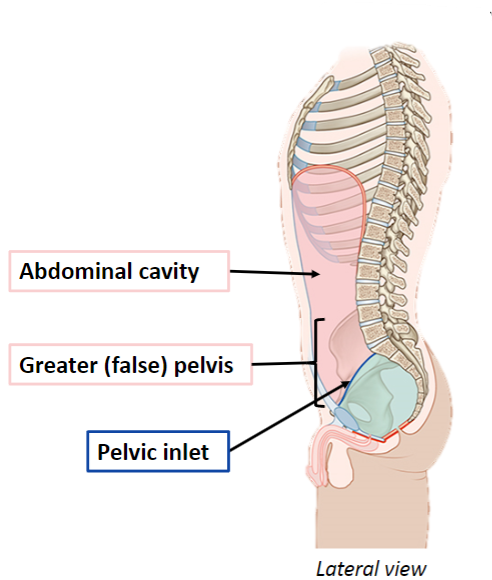
It helps guide the fetus into the true pelvis during labour.
What is the lesser (true) pelvis? (1)
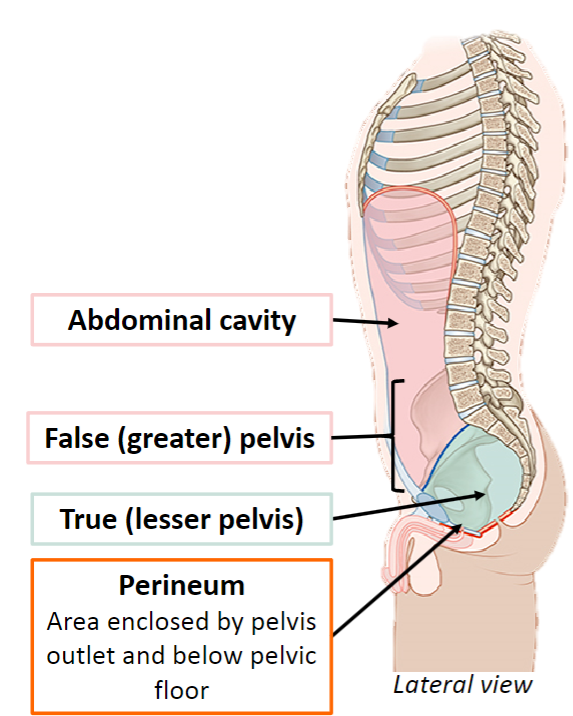
The area below the pelvic inlet and above the pelvic outlet.
What structures are included in the lesser (true) pelvis? (2)
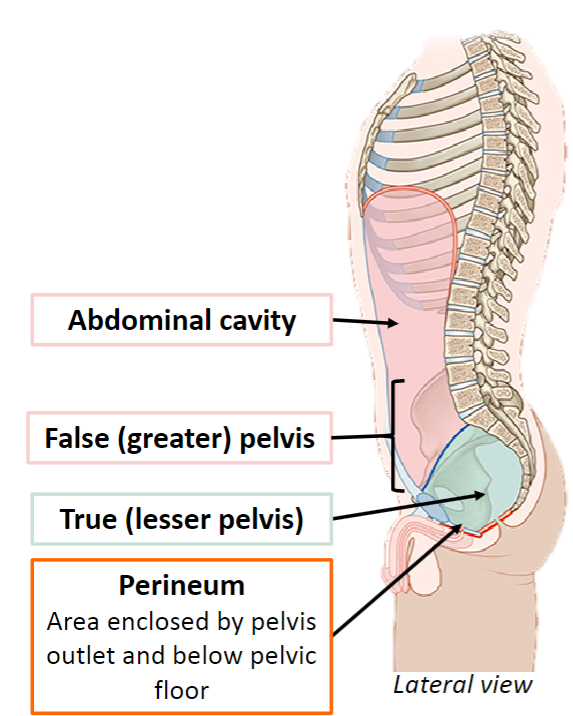
True pelvic cavity
Deep parts of the perineum (separated by the pelvic floor)
What does the lesser (true) pelvis contain? (1)
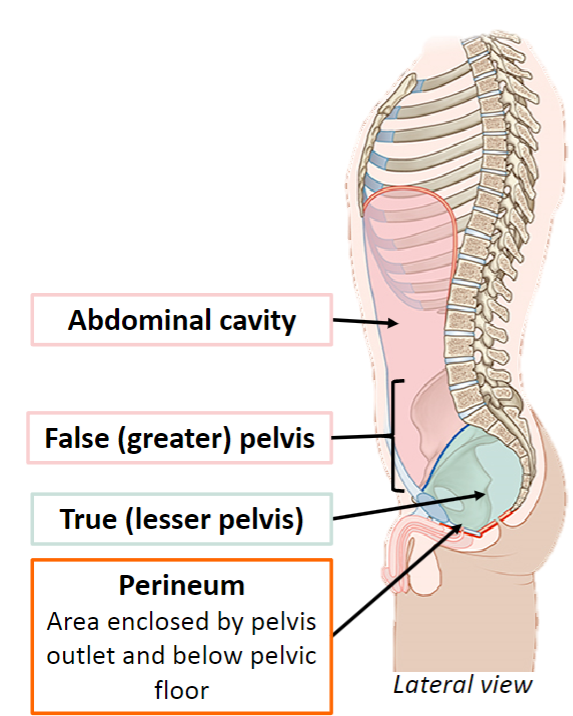
The pelvic organs.
Why are the shape and dimensions of the true pelvis important? (1)
They are of great importance for obstetricians in assessing childbirth.
What is the shape of the pelvic outlet? (1)
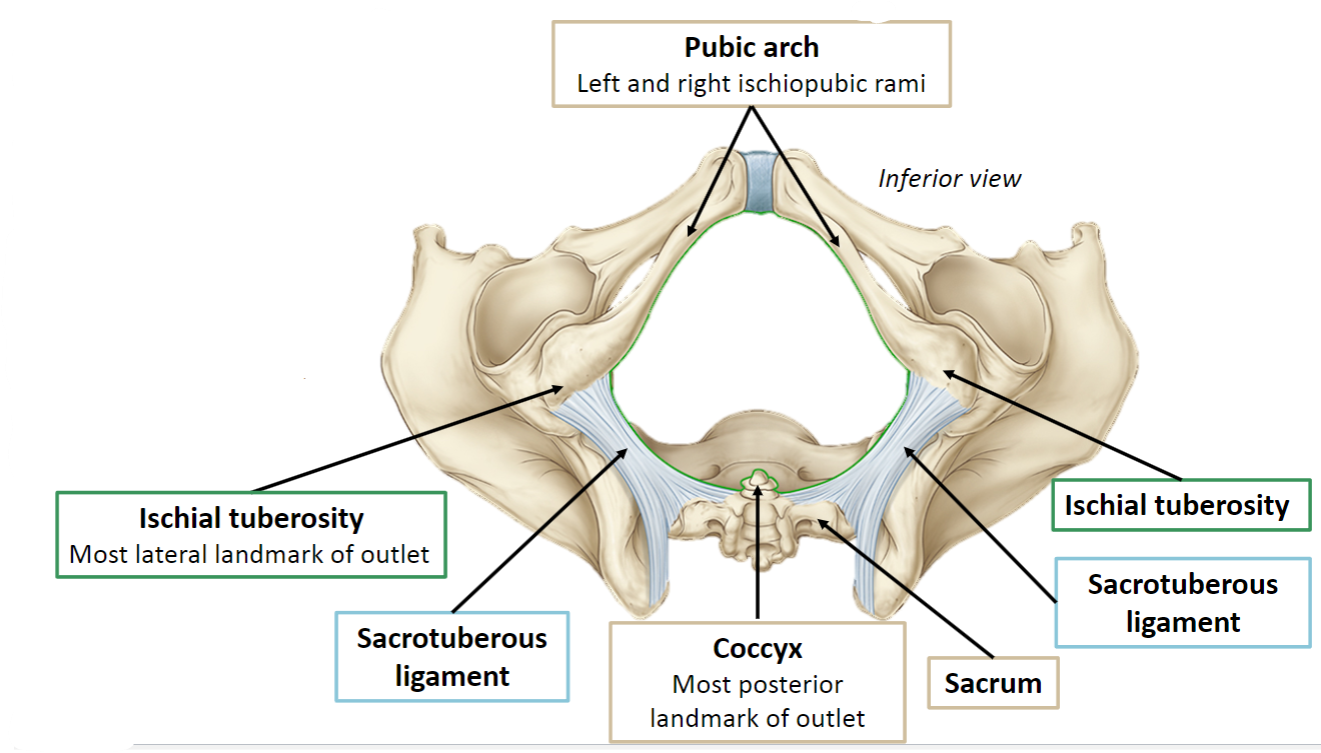
Diamond-shaped.
What is the composition of the pelvic outlet? (2)
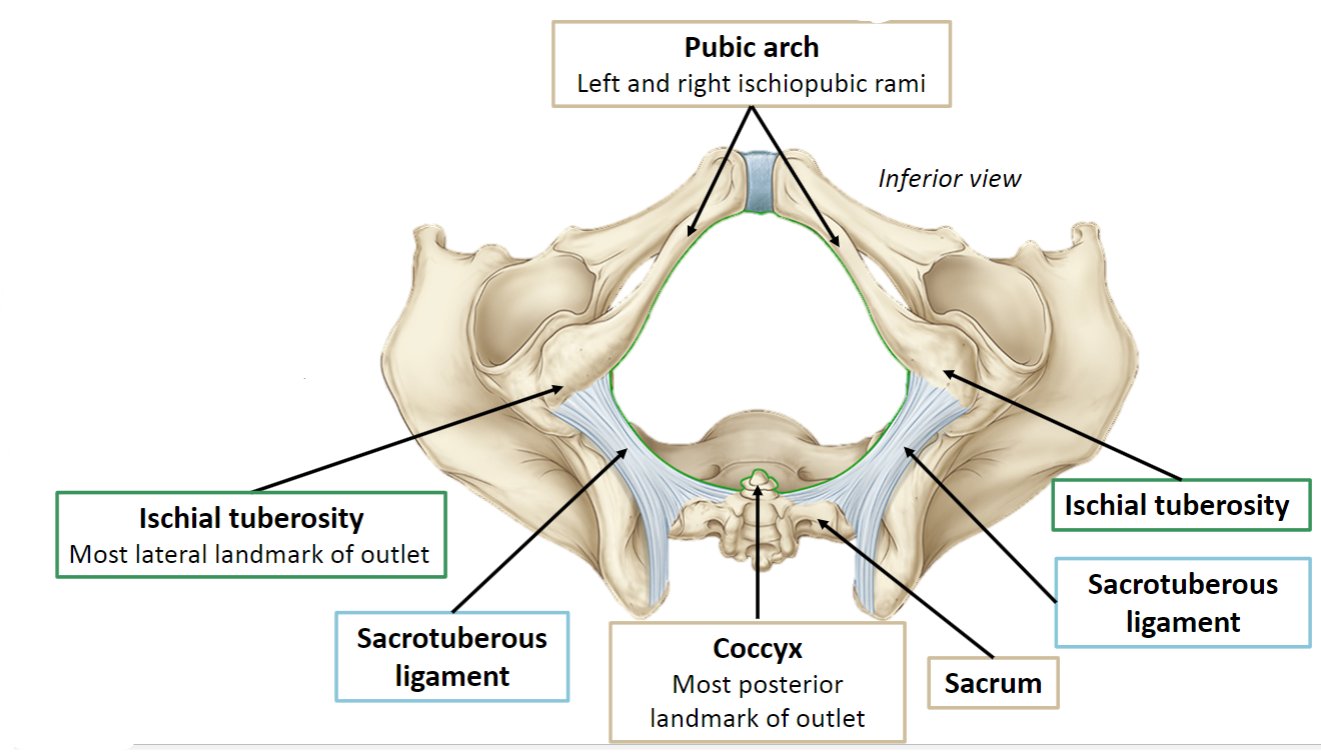
Bony anteriorly
Ligamentous posteriorly
What encloses the pelvic outlet? (1)
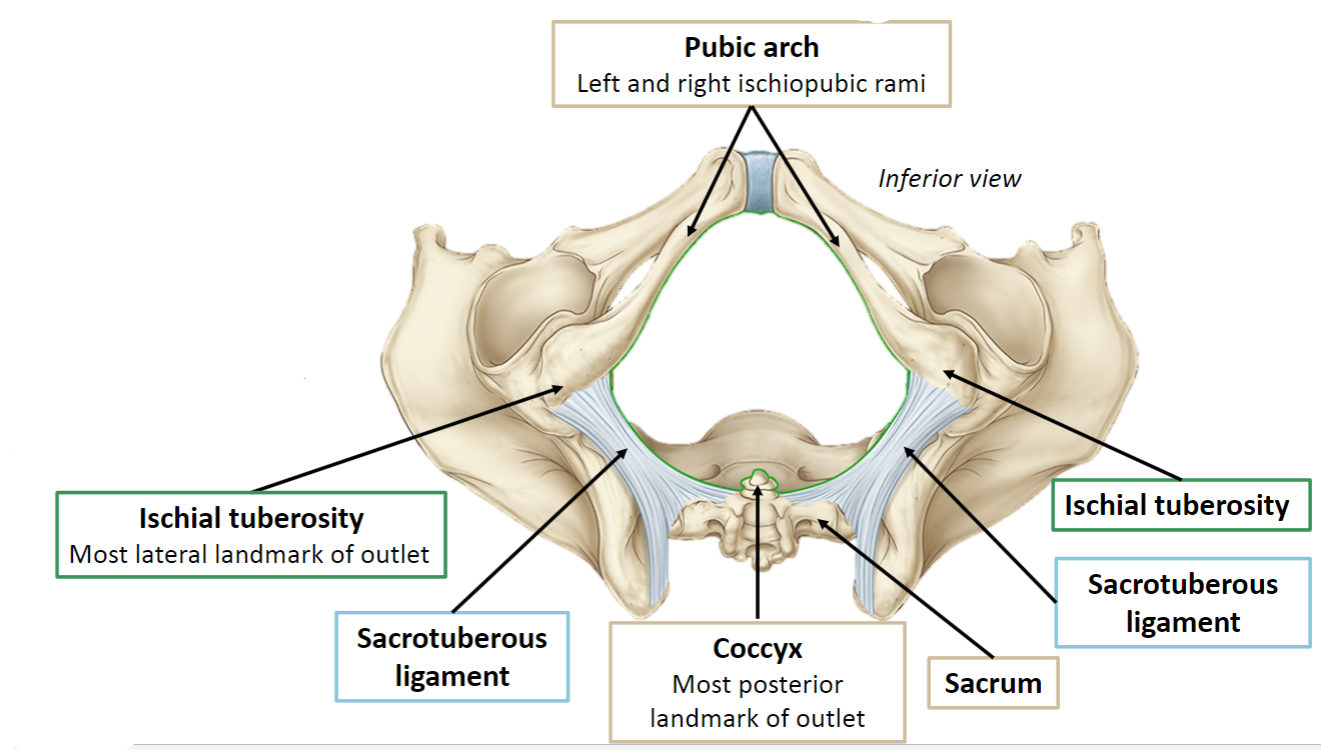
The pelvic floor.
What passes through the pelvic outlet? (3)
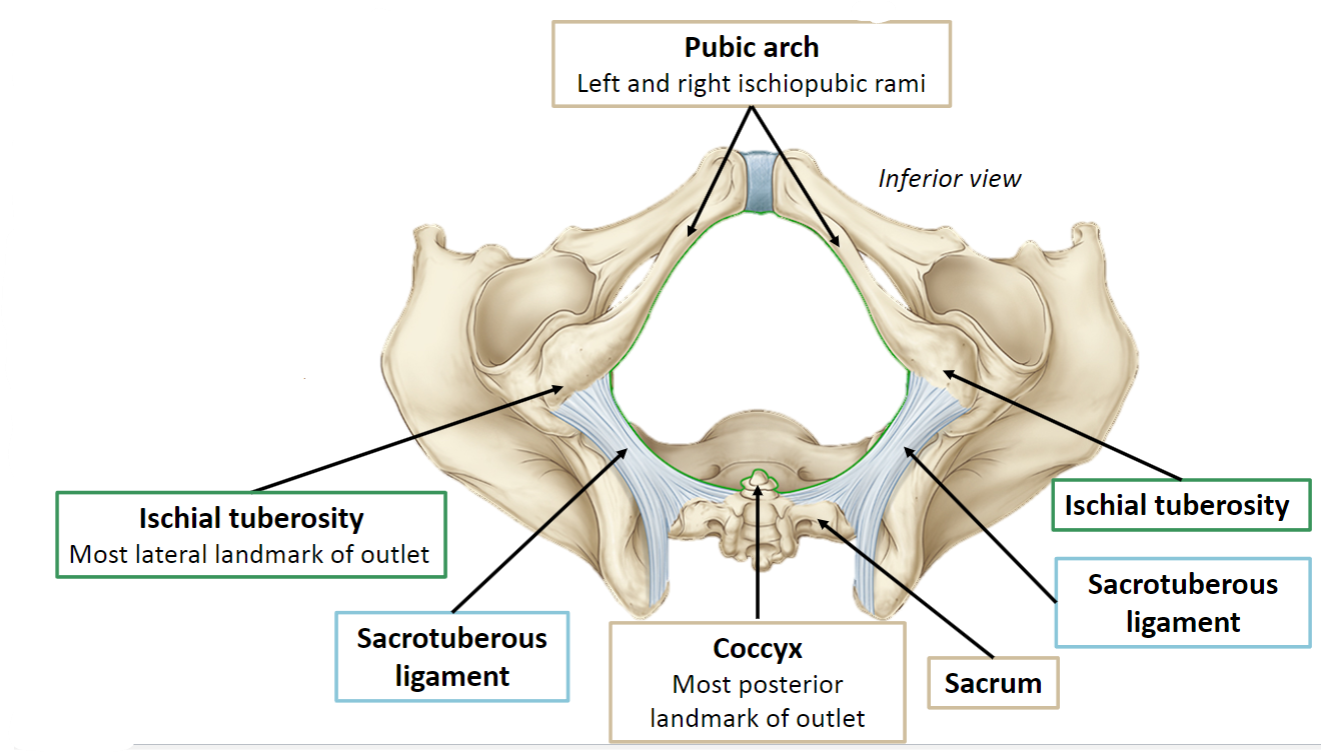
Terminal parts of the urinary tract
Gastrointestinal tract
Vagina
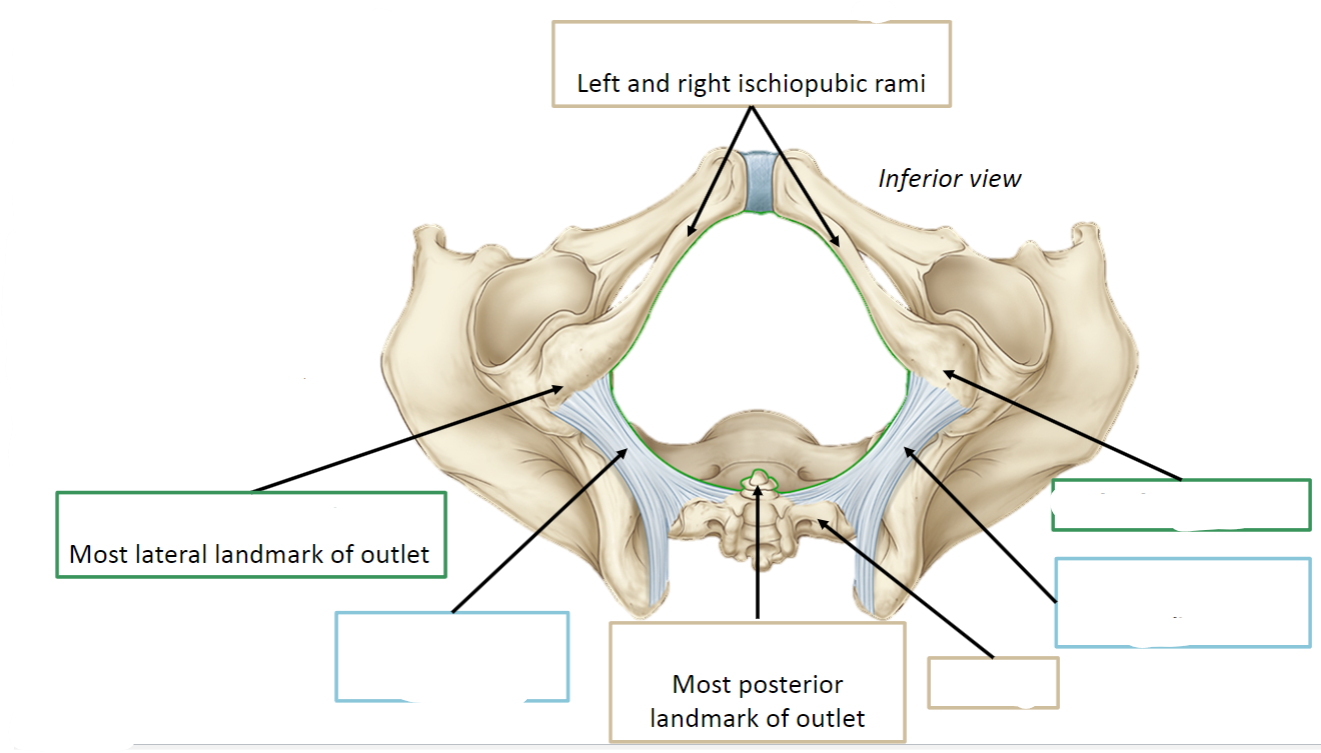
Label the Pelvic Outlet / Inferior Pelvic Aperture (7)
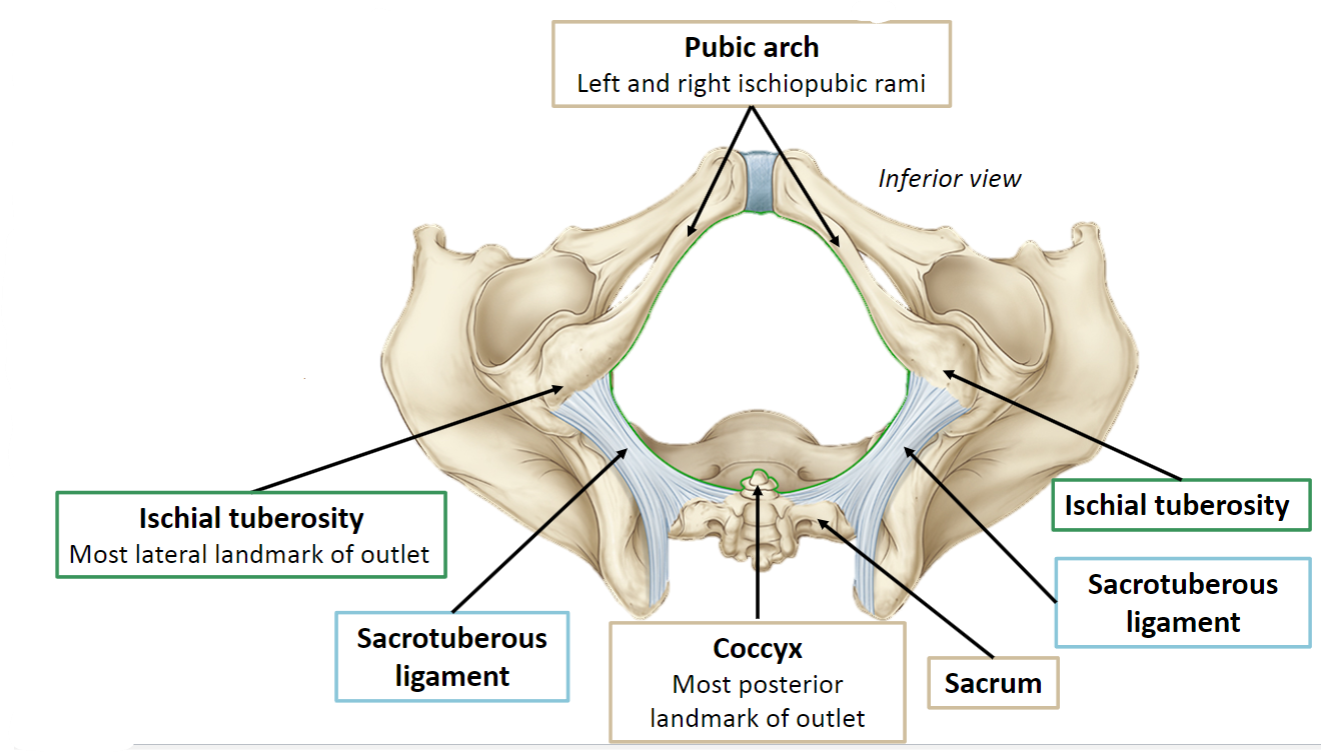
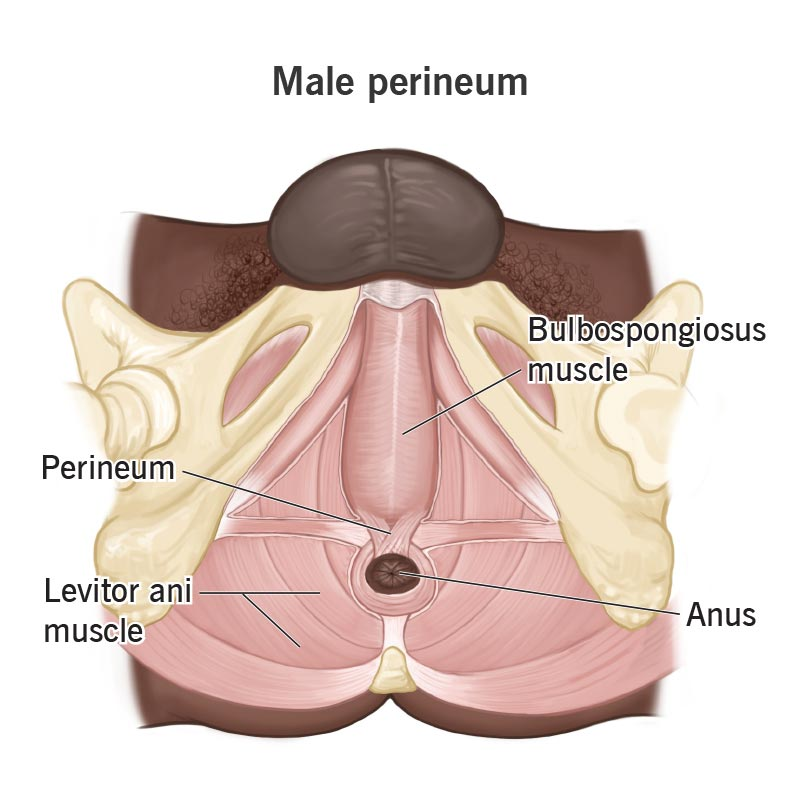
What does the pelvic floor form? (2)
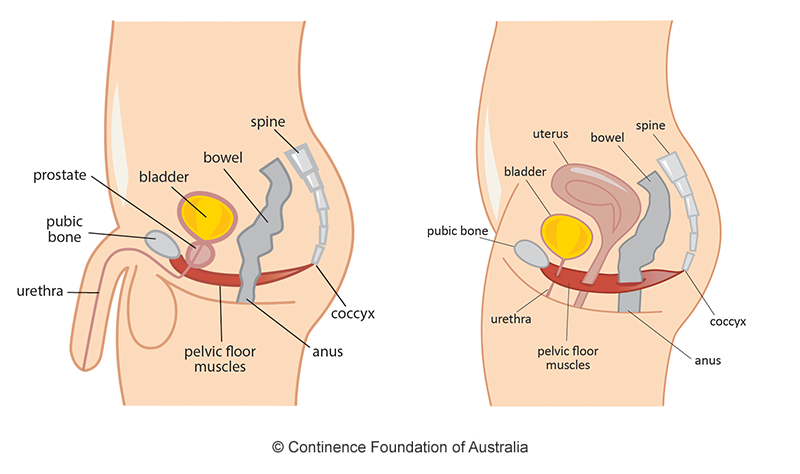
The inferior boundary of the pelvic cavity
The superior boundary of the perineum
What is the shape of the pelvic floor? (1)
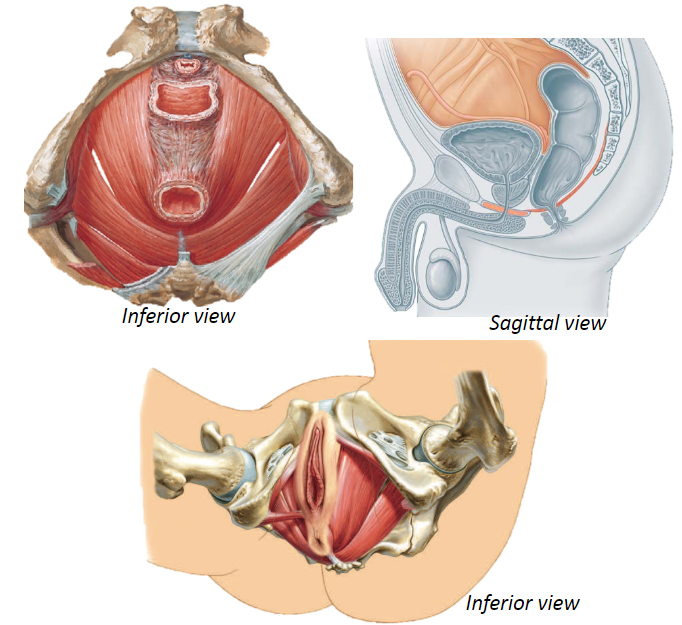
Bowl or funnel-shaped.
Why is the pelvic floor incomplete anteriorly? (1)
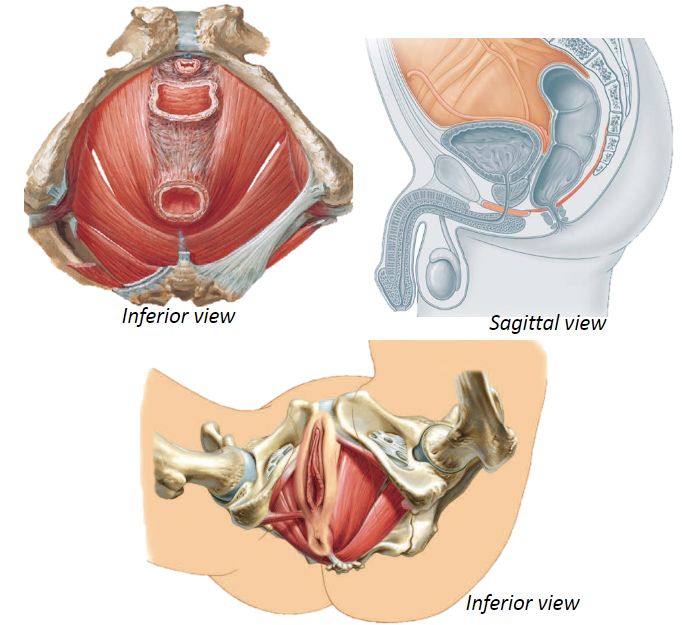
To allow passage of the urethra and vagina (urogenital hiatus).
What are the functions of the pelvic floor as a muscular sling? (3)
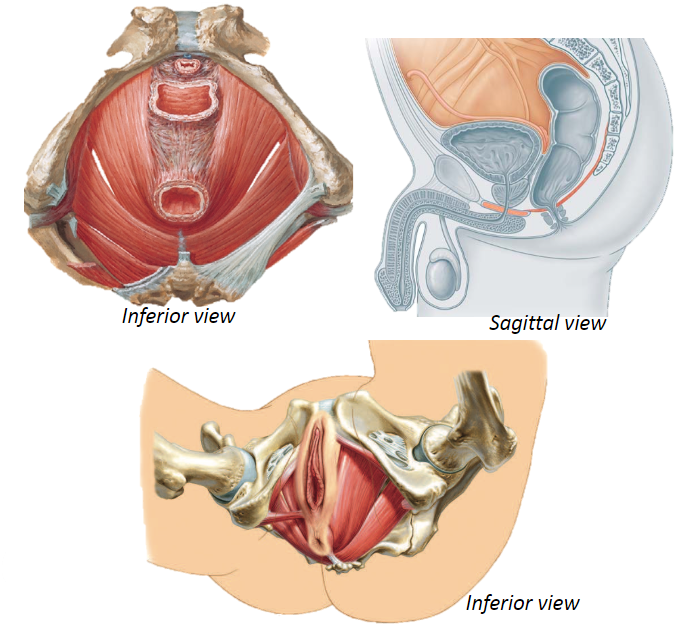
Supports pelvic viscera (prevents prolapse)
Maintains continence
Maintains closure of the rectum and vagina
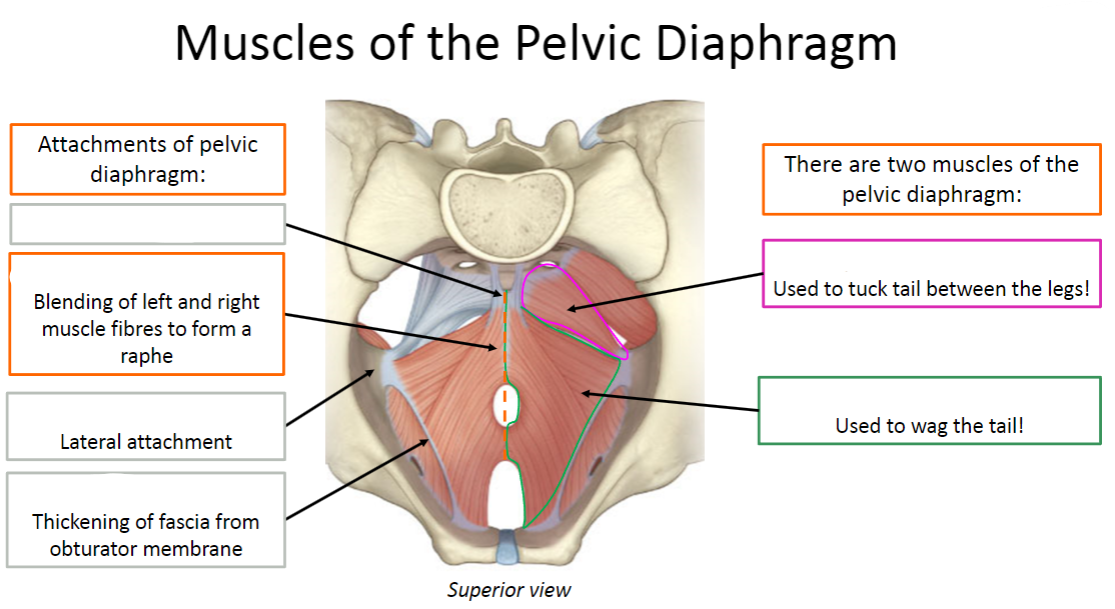
Label the Muscles of the Pelvic Diaphragm (6)
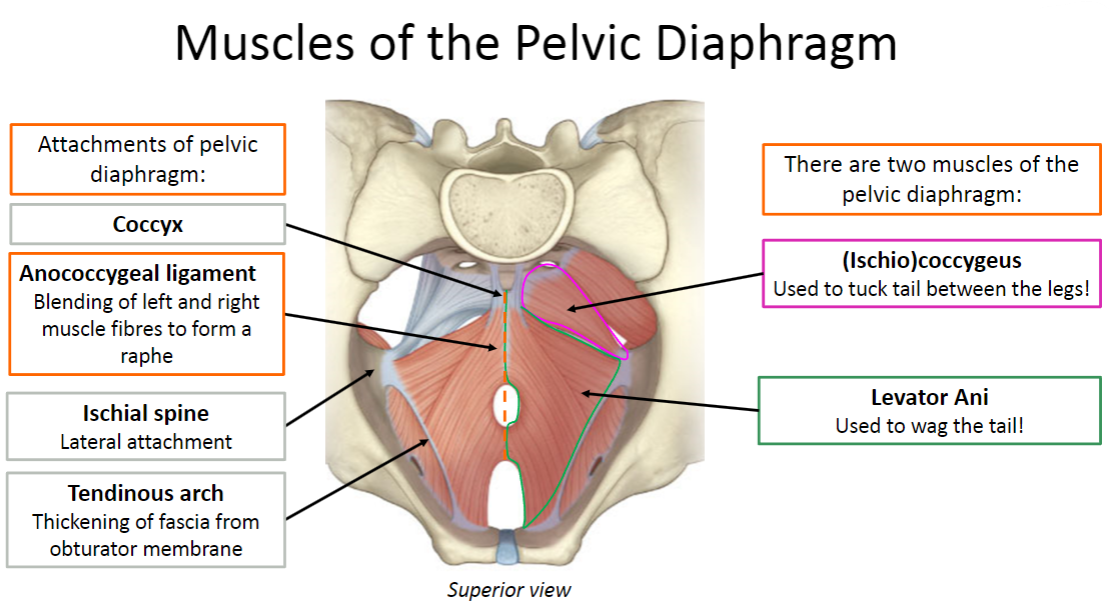
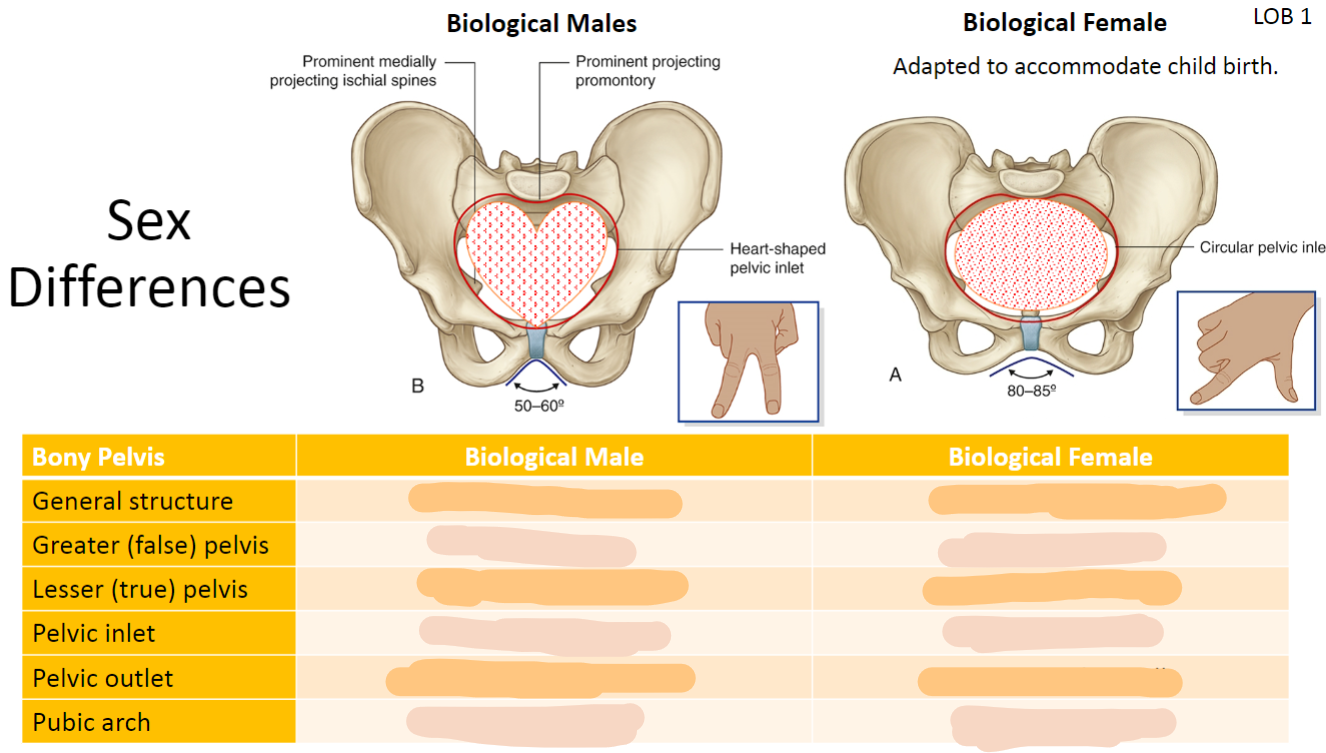
List the Sex differences of the pelvis (12)
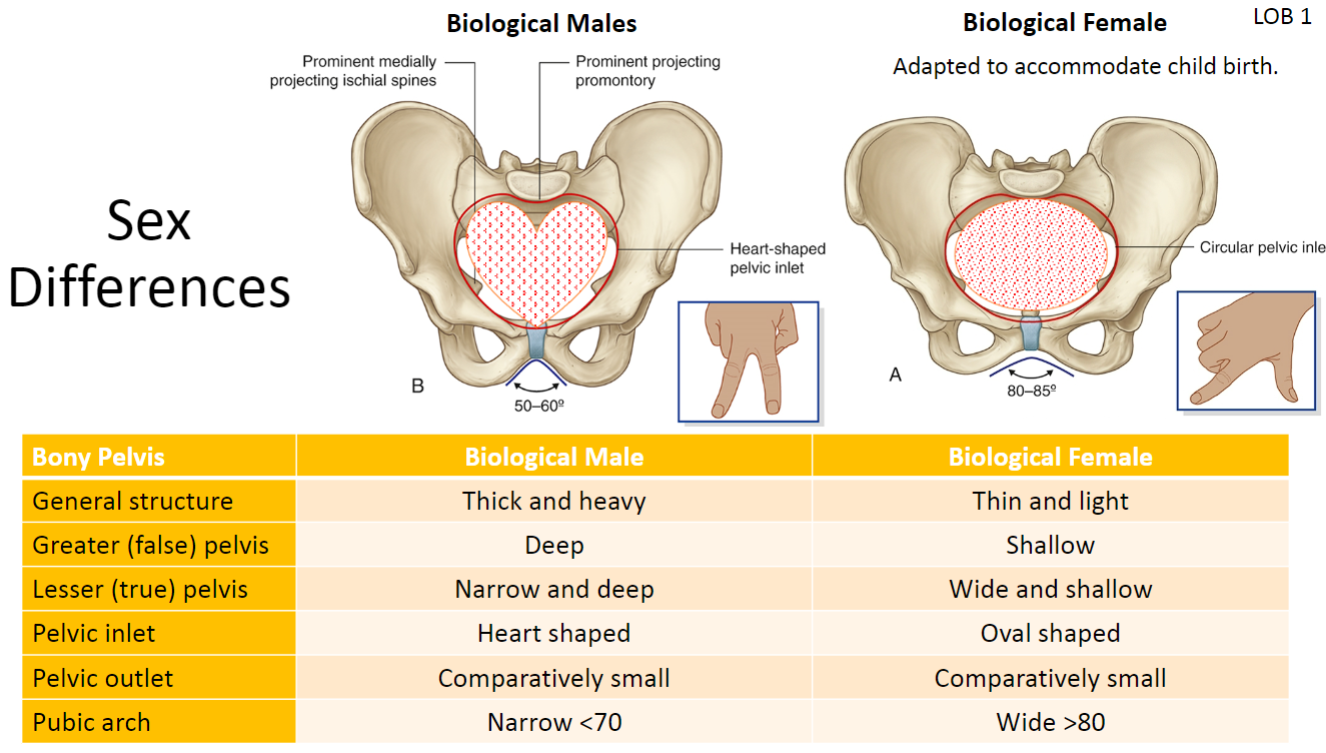
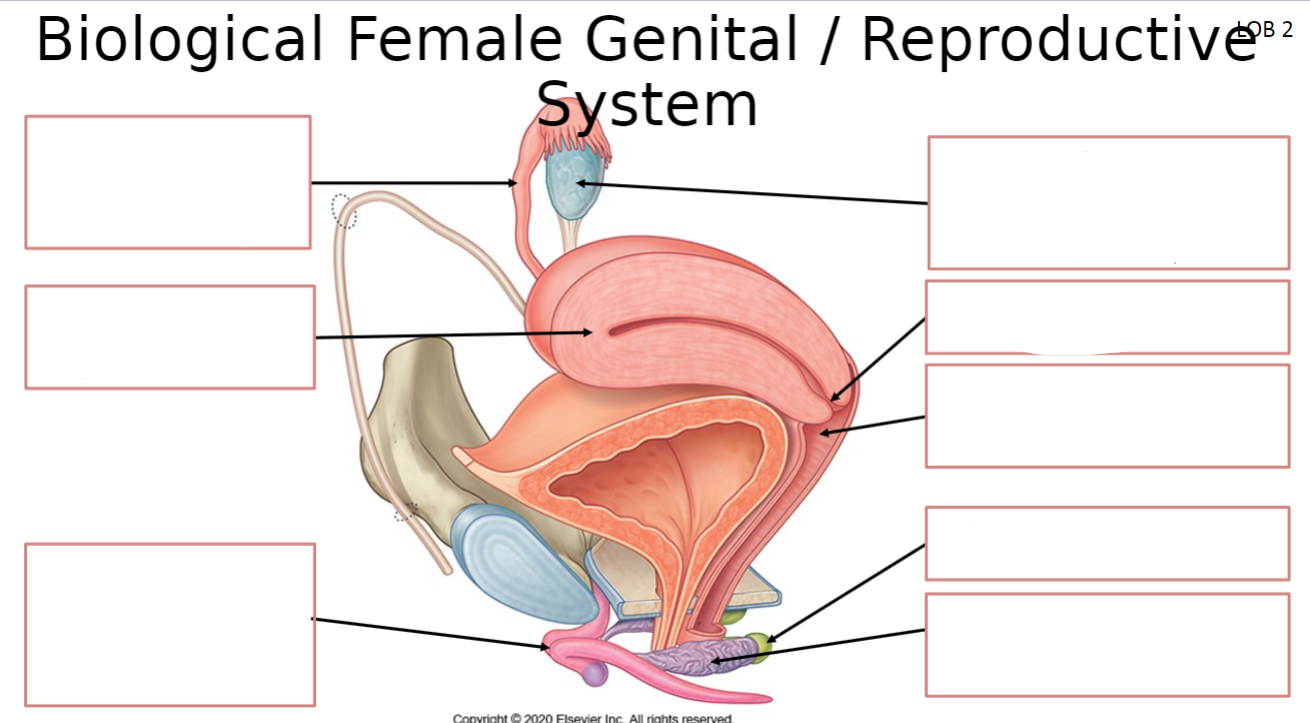
State these parts of the female genital reproductive system: If you can also elaborate on each part
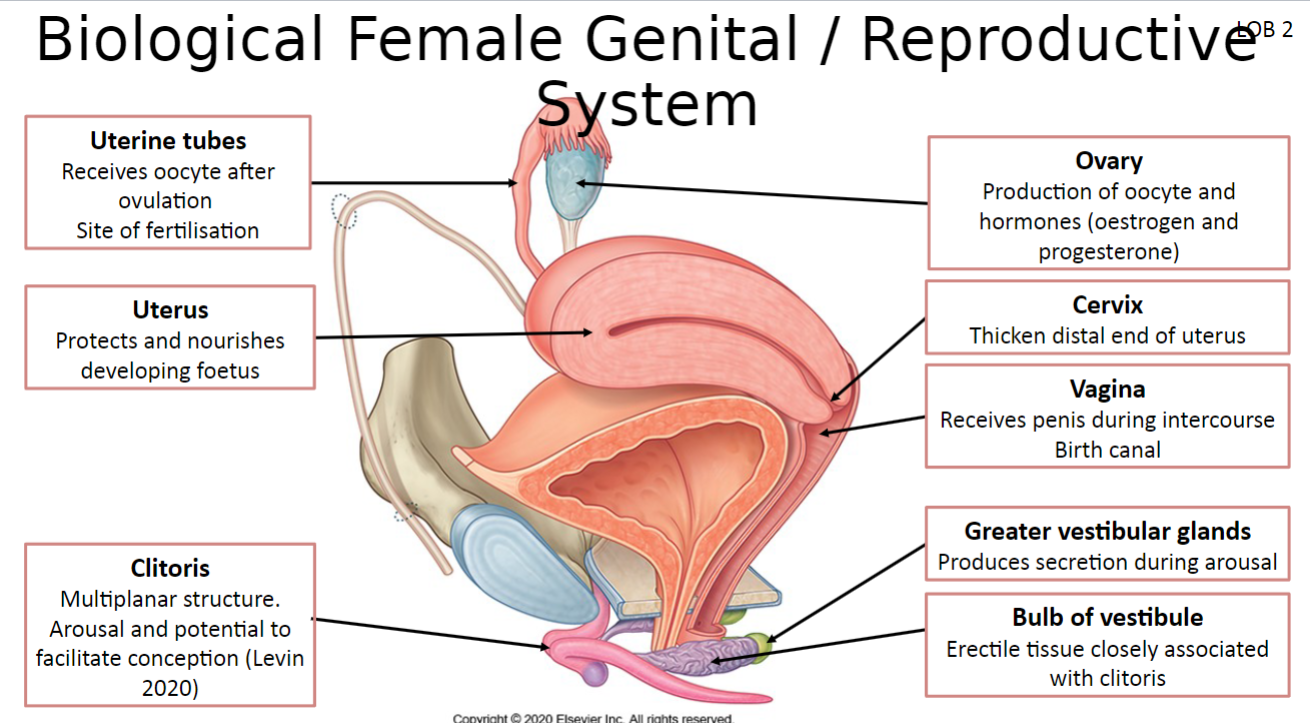
What are the functions of the ovaries? (2)
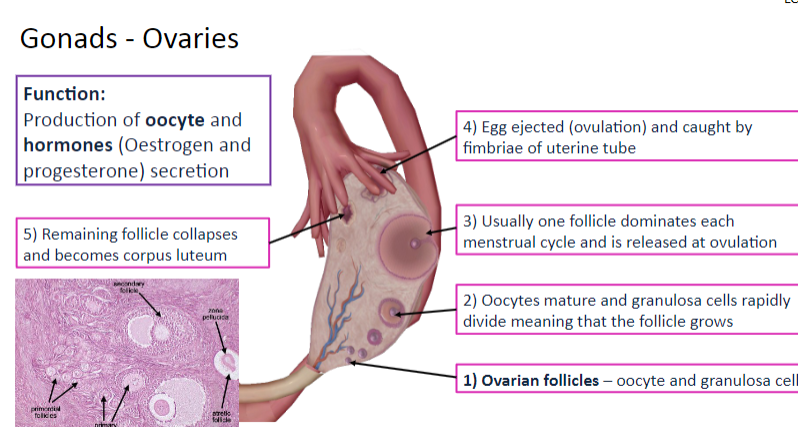
The ovaries are responsible for the production of oocytes (eggs) and the secretion of hormones, including estrogen and progesterone.
What are ovarian follicles composed of?
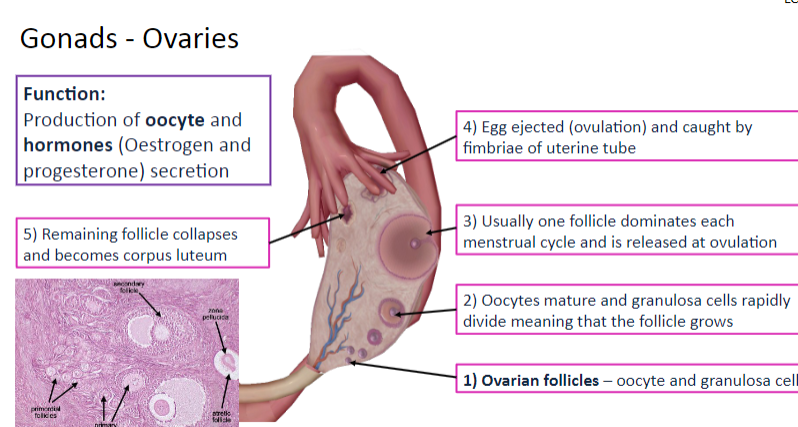
Ovarian follicles consist of an oocyte surrounded by granulosa cells.
What happens to oocytes and granulosa cells during follicle development?
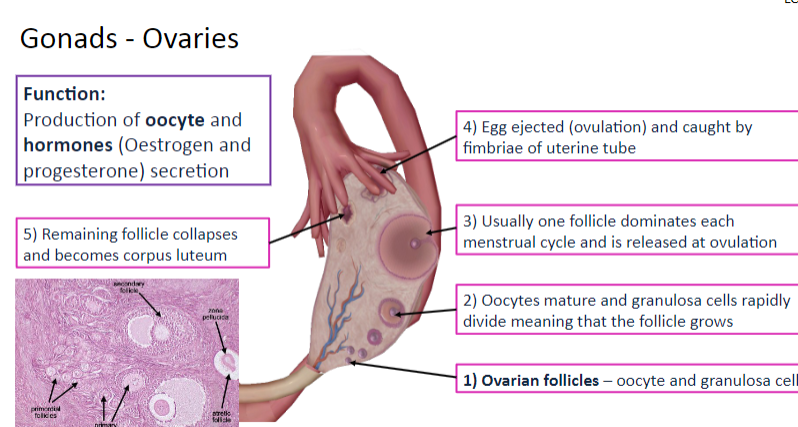
Oocytes mature and granulosa cells rapidly divide, leading to the growth of the follicle.
What typically happens during each menstrual cycle regarding follicle dominance?
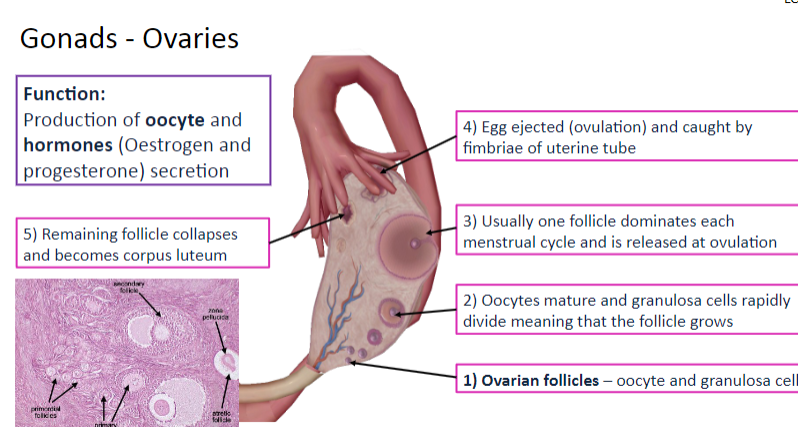
Usually, one follicle dominates each menstrual cycle and is released at ovulation.
What occurs during ovulation?
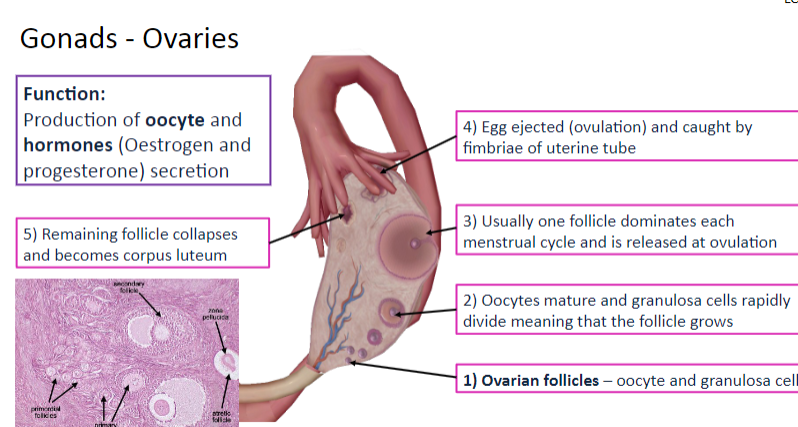
The egg is ejected (ovulation) and caught by the fimbriae of the uterine tube.
What happens to the remaining follicle after ovulation?
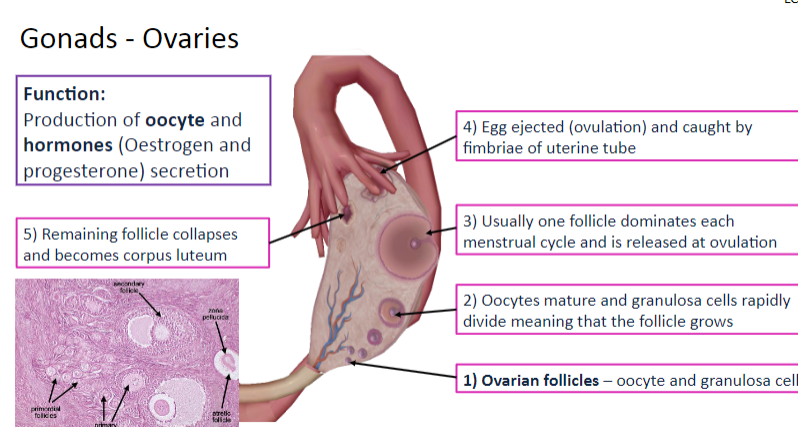
The remaining follicle collapses and becomes the corpus luteum.
What are fimbriae?
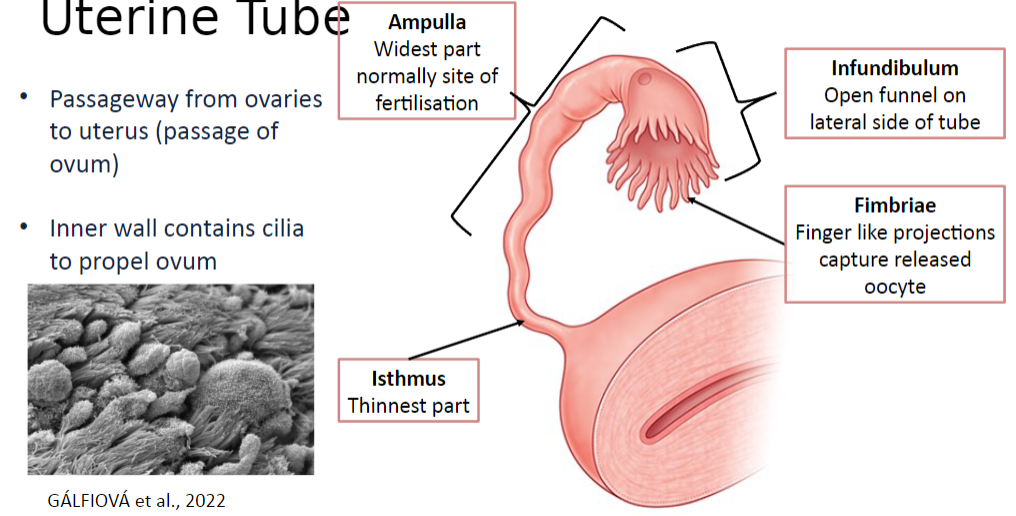
Fimbriae are finger-like projections that capture the released oocyte.
What is the infundibulum?
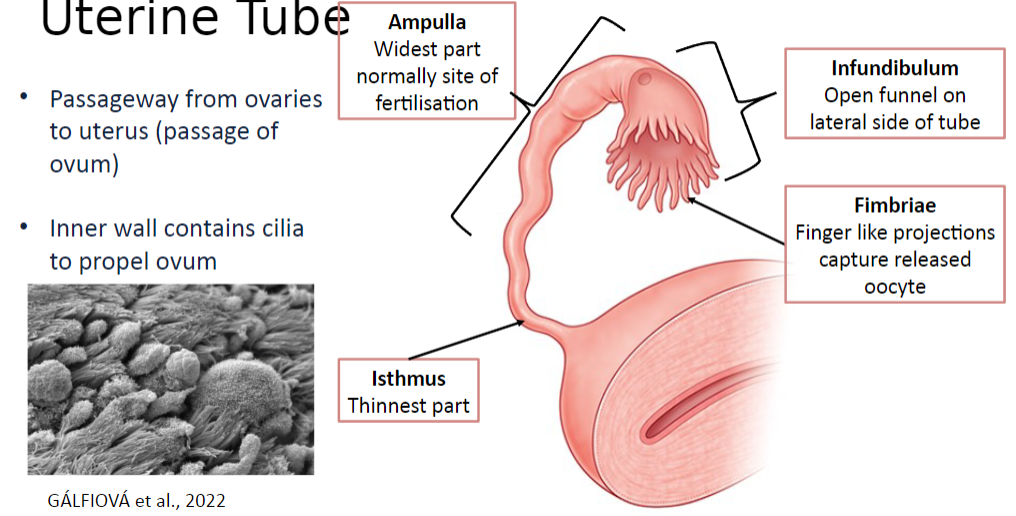
The infundibulum is an open funnel on the lateral side of the tube.
What is the ampulla?
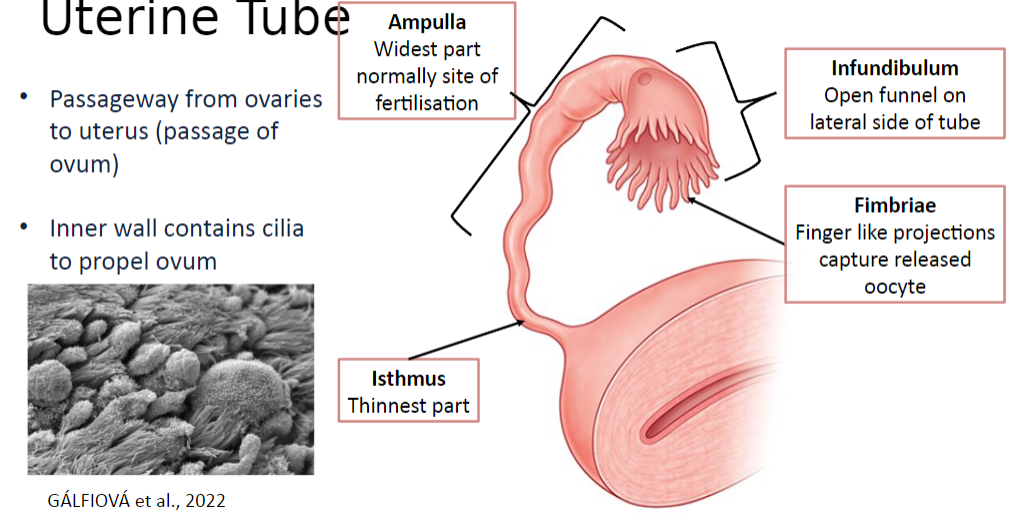
The ampulla is the widest part of the uterine tube and is normally the site of fertilization.
What is the isthmus?
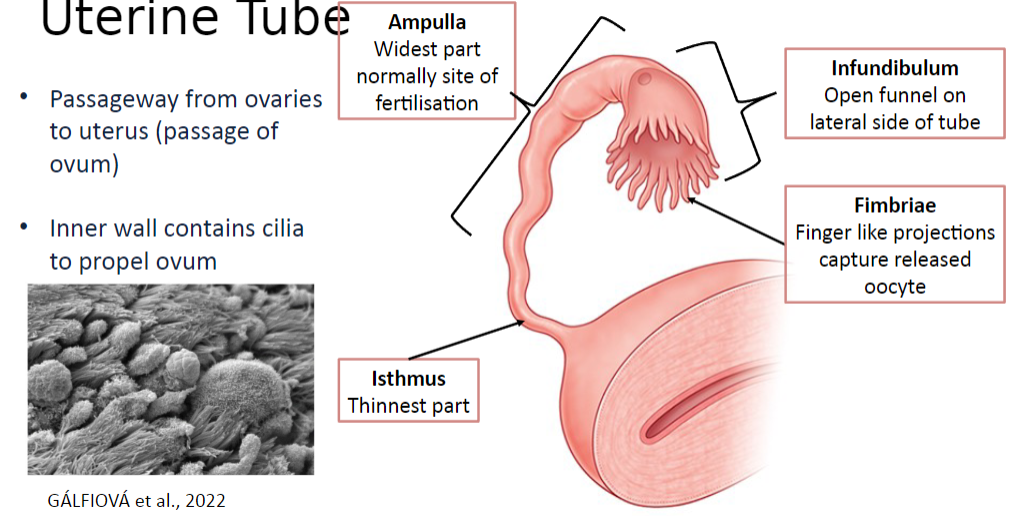
The isthmus is the thinnest part of the uterine tube, serving as a passageway from the ovaries to the uterus for the passage of the ovum.
What is the function of the cilia in the inner wall of the uterine tube?
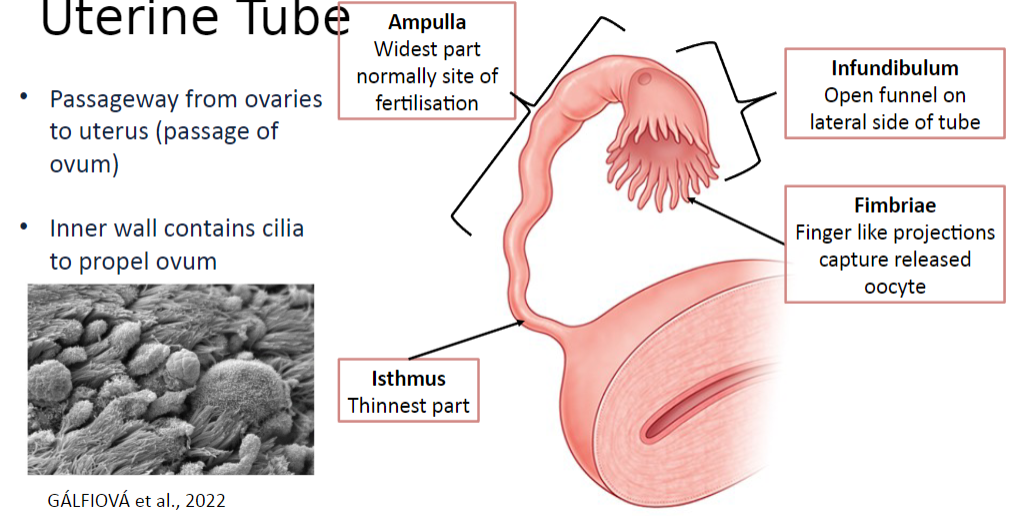
The cilia in the inner wall of the uterine tube propel the ovum along the tube.
What is the structure of the uterus?
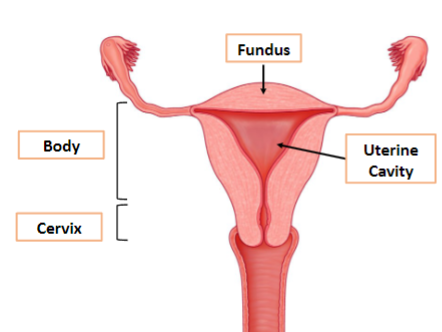
The uterus is a hollow, pear-shaped muscular (smooth muscle) organ that protects and nourishes a developing fetus.
What are the three layers of the uterine wall?
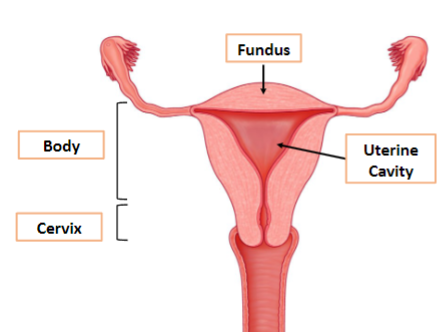
The three layers of the uterine wall are:
Perimetrium: the outer serous wall covering the uterus.
Myometrium: the thick muscular layer responsible for the process of parturition (childbirth).
Endometrium: the inner mucous layer, which serves as the site of implantation and undergoes thickness changes throughout the menstrual cycle.
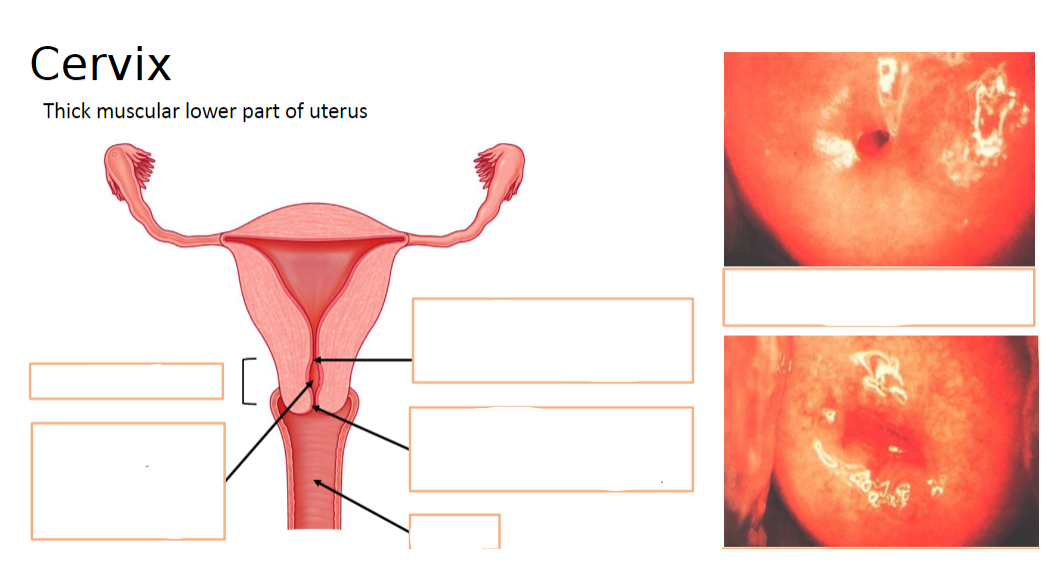
Label these parts of the cervix:
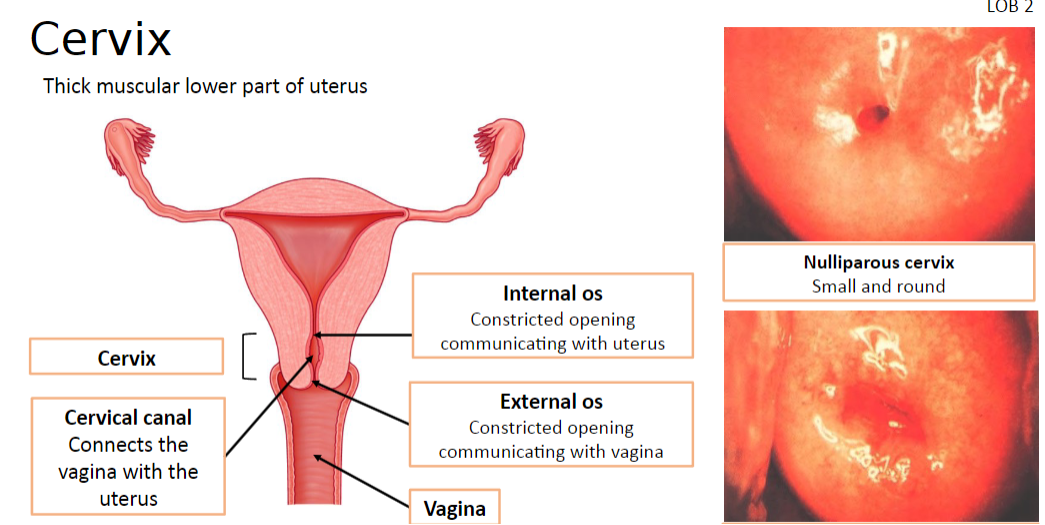
What is the cervix?
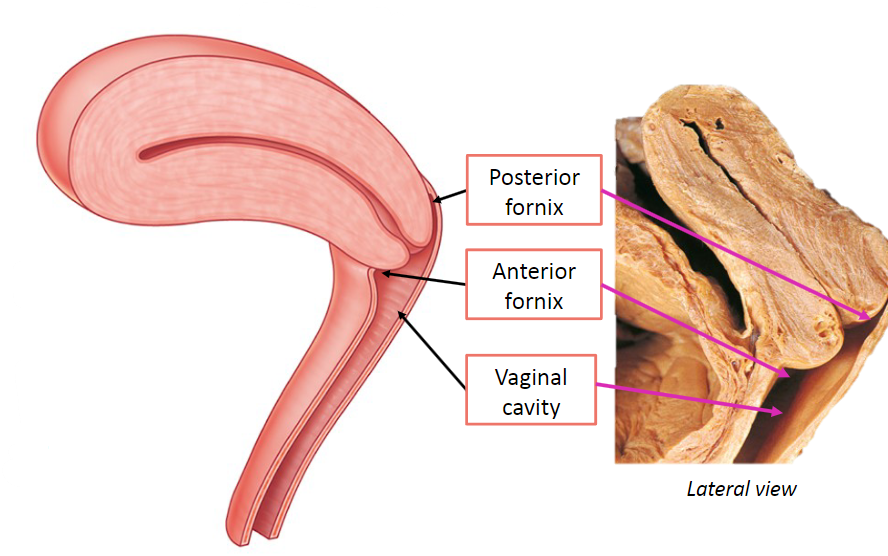
The cervix is the thick muscular lower part of the uterus.
What are the functions of the vagina?
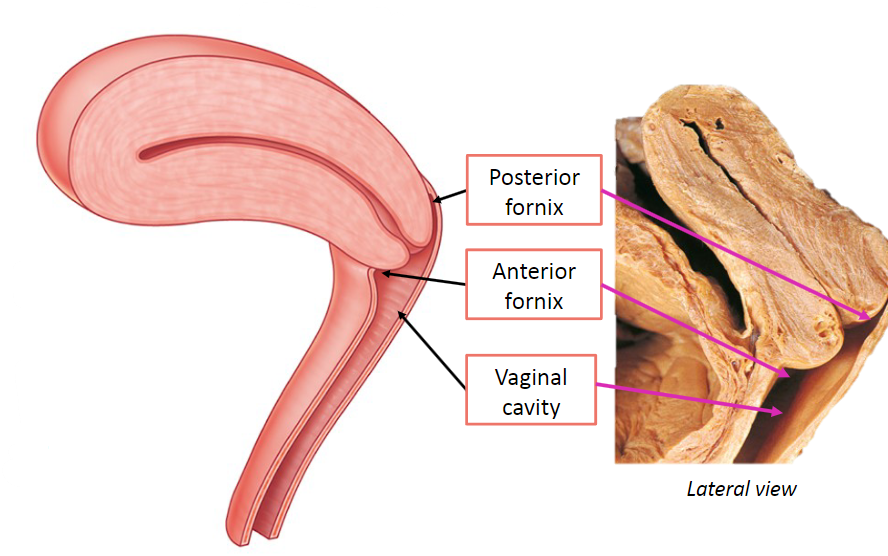
The vagina serves as a canal for menstruation, receives the penis during copulation (for semen deposition), and acts as the birth canal during childbirth.
How would you describe the structure of the vagina?
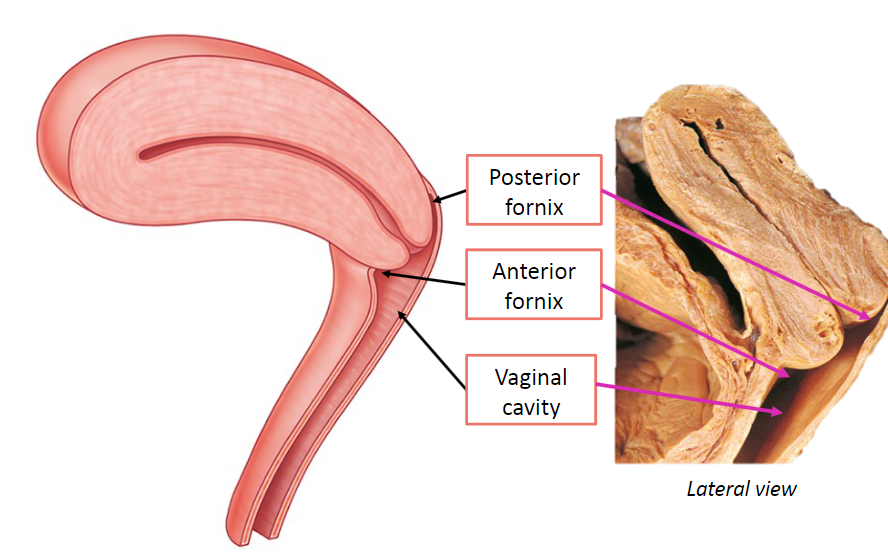
The vagina is a distensible fibromuscular tube.
How is the area of the vaginal lumen divided?
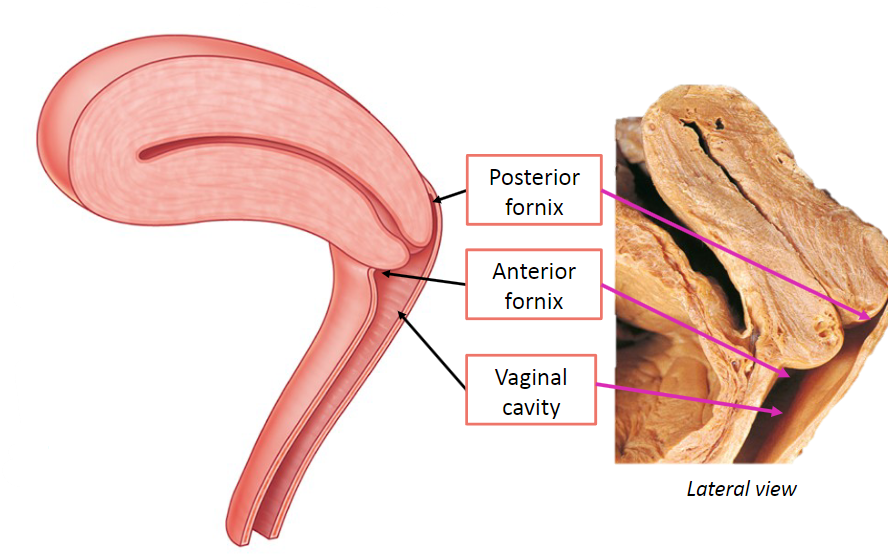
The area of the vaginal lumen, particularly surrounding the cervix, is divided into four parts: anterior, posterior, and left and right lateral fornices.
What is anteflexion of the uterus?

Anteflexion is when the axis of the body of the uterus is bent forward with the long axis of the cervix.
What is anteversion of the cervix?
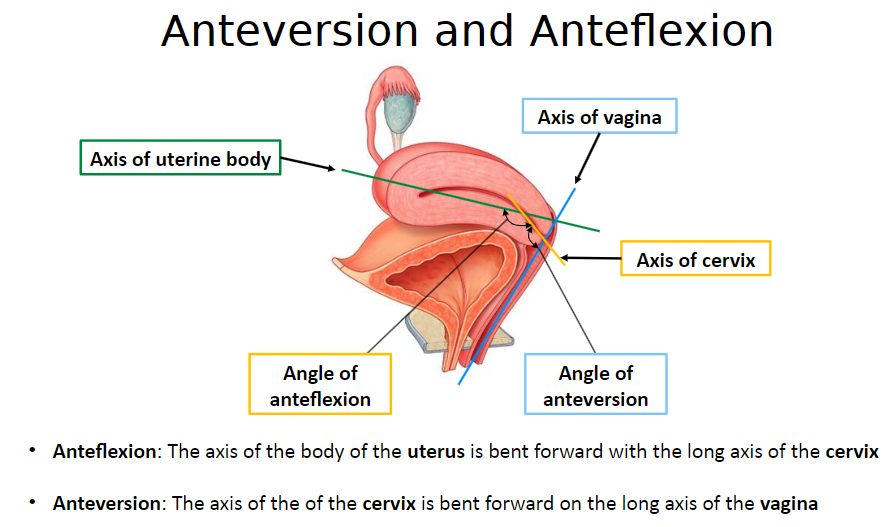
Anteversion is when the axis of the cervix is bent forward on the long axis of the vagina.
What is the structure of the clitoris?
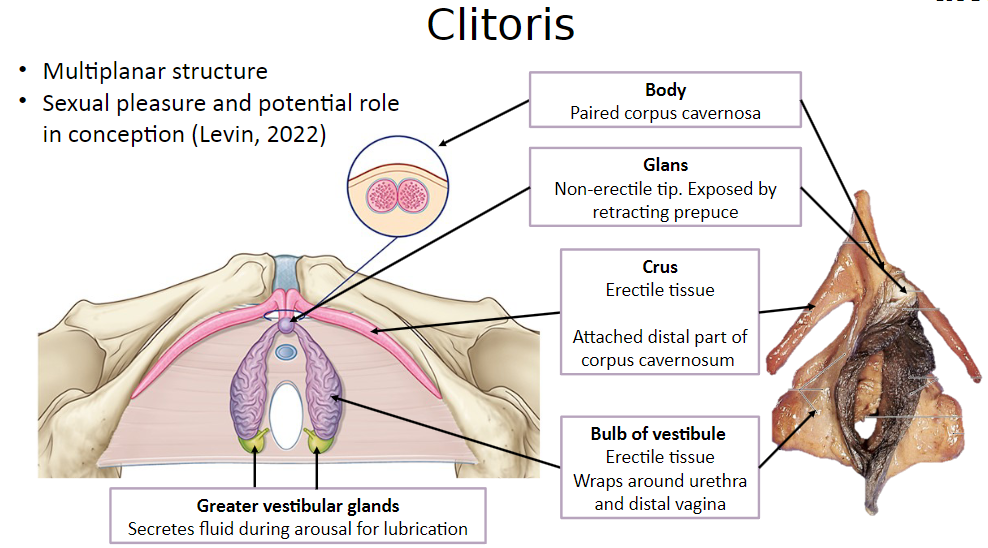
The clitoris is a multiplanar structure.
What are the functions of the clitoris?
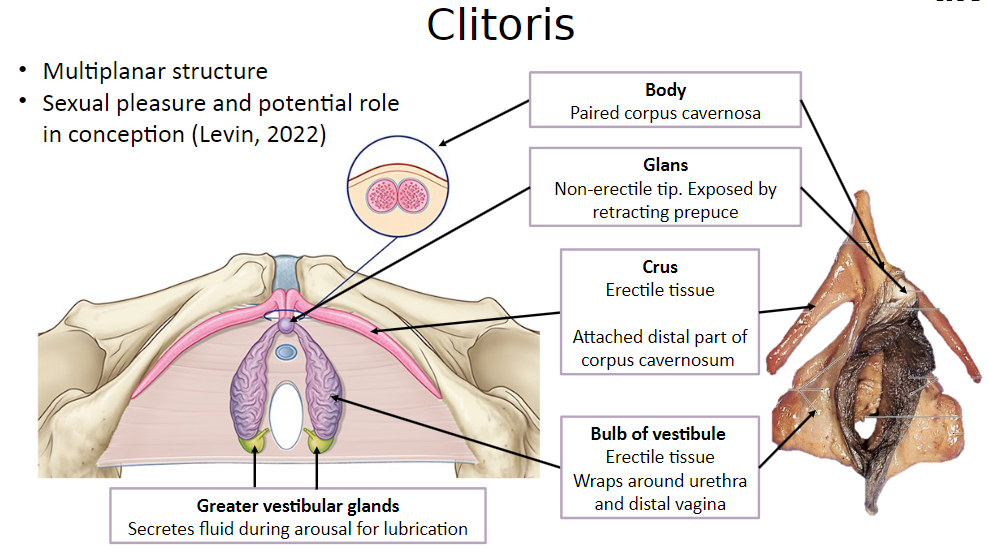
The clitoris is involved in sexual pleasure and may have a potential role in conception.
Picture demonstrating the picture of external female genitalia:
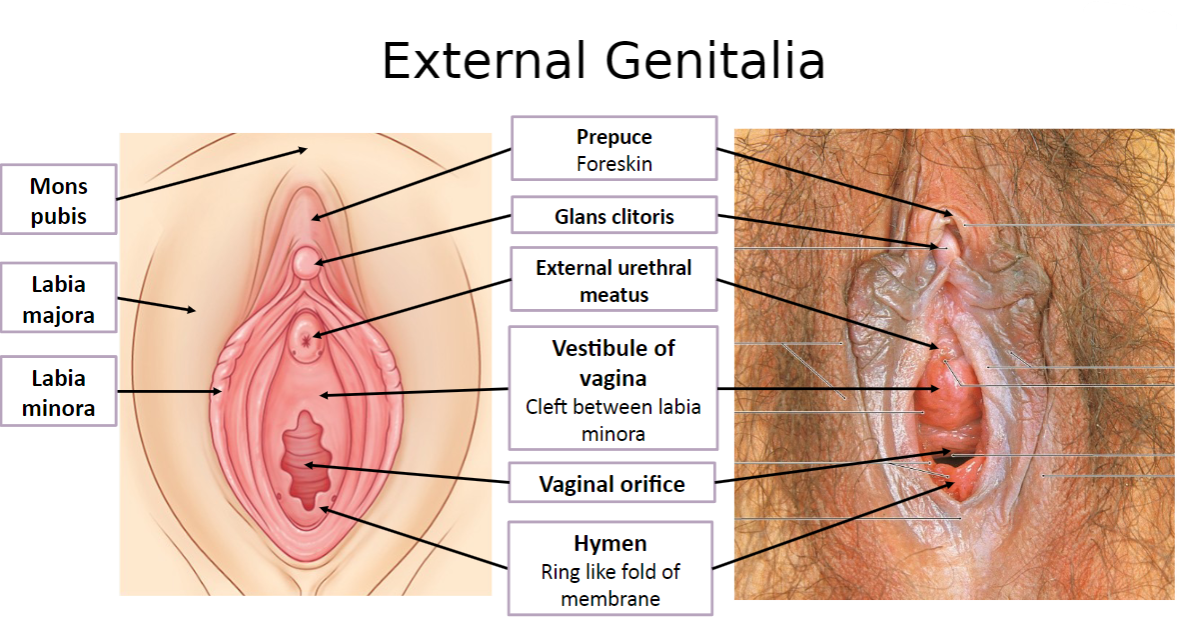
Picture demonstrating the male reproductive system:
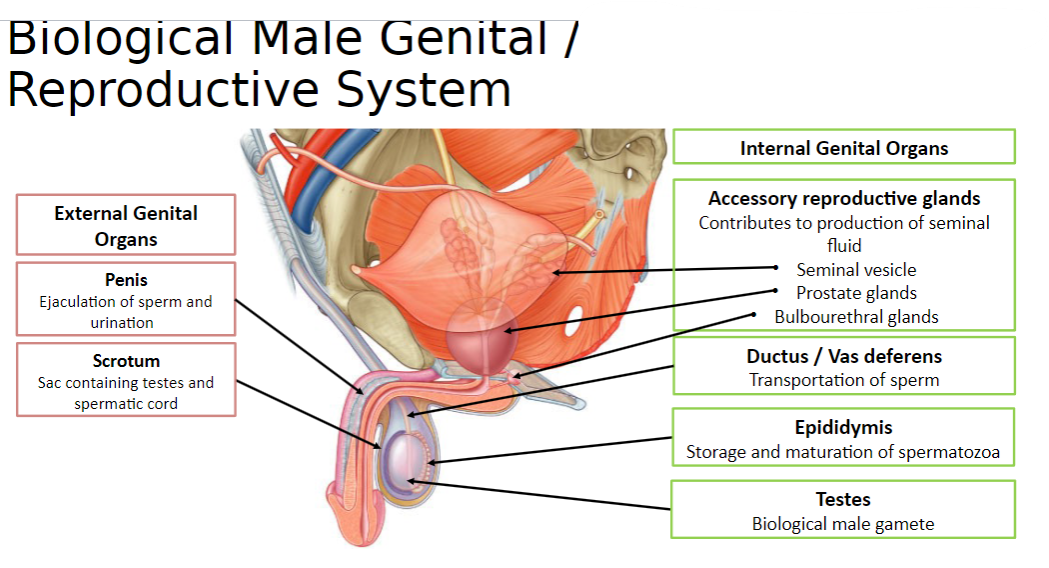
What is the structure of the scrotum?
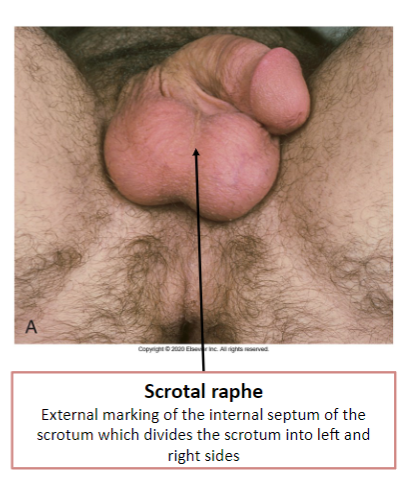
The scrotum is a cutaneous sac consisting of skin and fascia.
What does the scrotum contain?
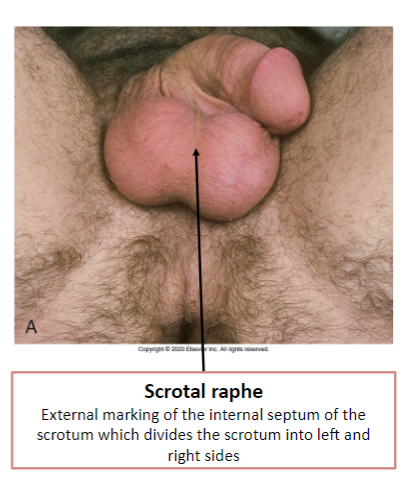
The scrotum contains the left and right testes and the spermatic cord, separated by a septum.
Why are the gonads externalized from the abdominopelvic cavity?

The gonads are externalized to ensure a cooler environment and allow for temperature regulation.
What is the scrotal raphe?
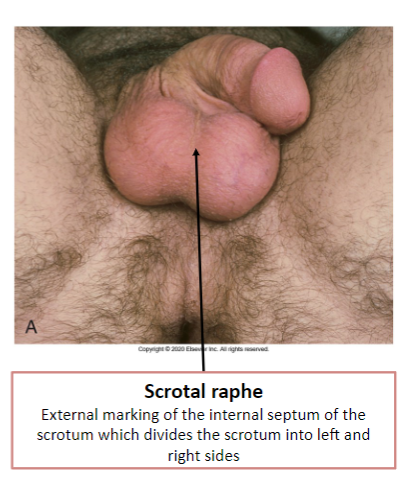
The scrotal raphe is the external marking of the internal septum of the scrotum, which divides the scrotum into left and right sides.
What are the testes?
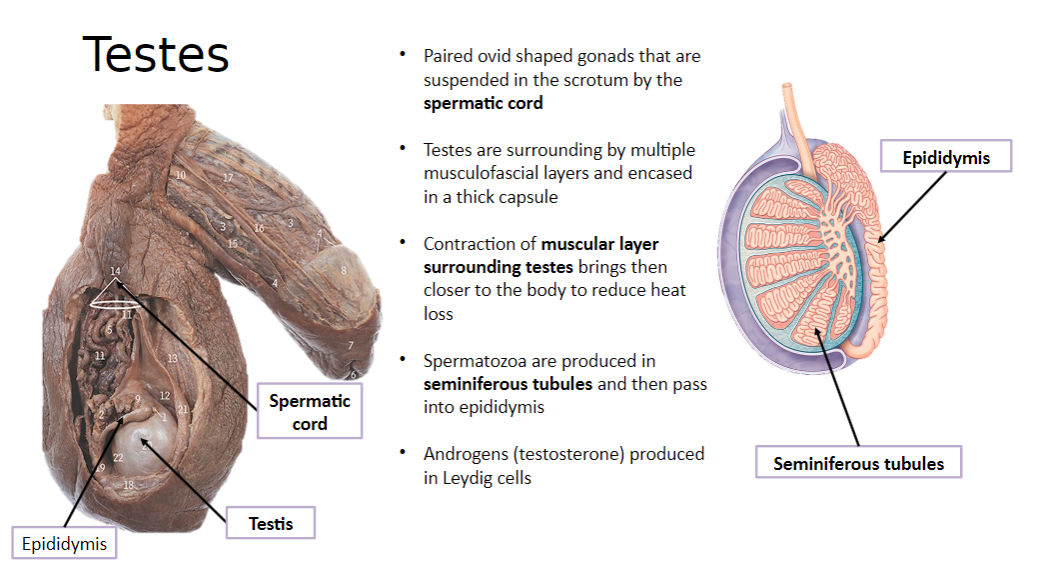
The testes are paired ovoid-shaped gonads that are suspended in the scrotum by the spermatic cord.
What surrounds the testes?
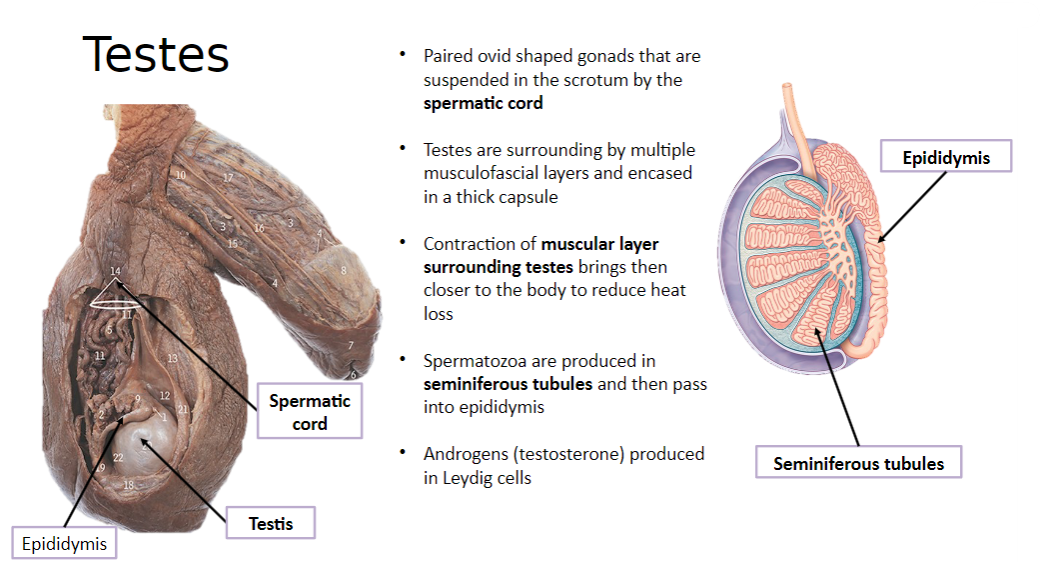
The testes are surrounded by multiple musculofascial layers and are encased in a thick capsule.
What is the function of the muscular layer surrounding the testes?
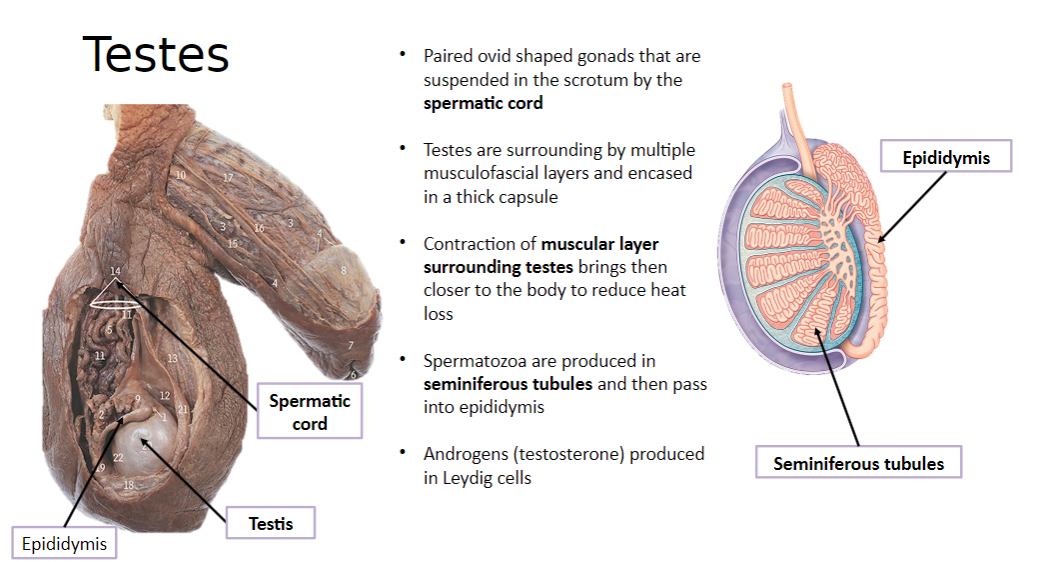
The contraction of the muscular layer surrounding the testes brings them closer to the body to reduce heat loss.
Where are spermatozoa produced and where do they go afterwards?
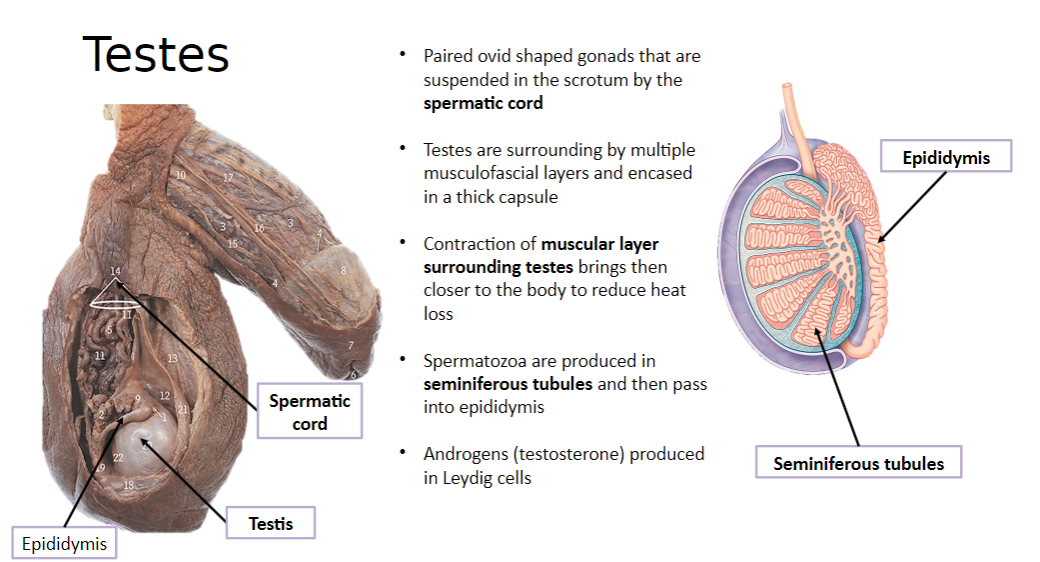
Spermatozoa are produced in the seminiferous tubules and then pass into the epididymis.
What do the Leydig cells in the testes produce?
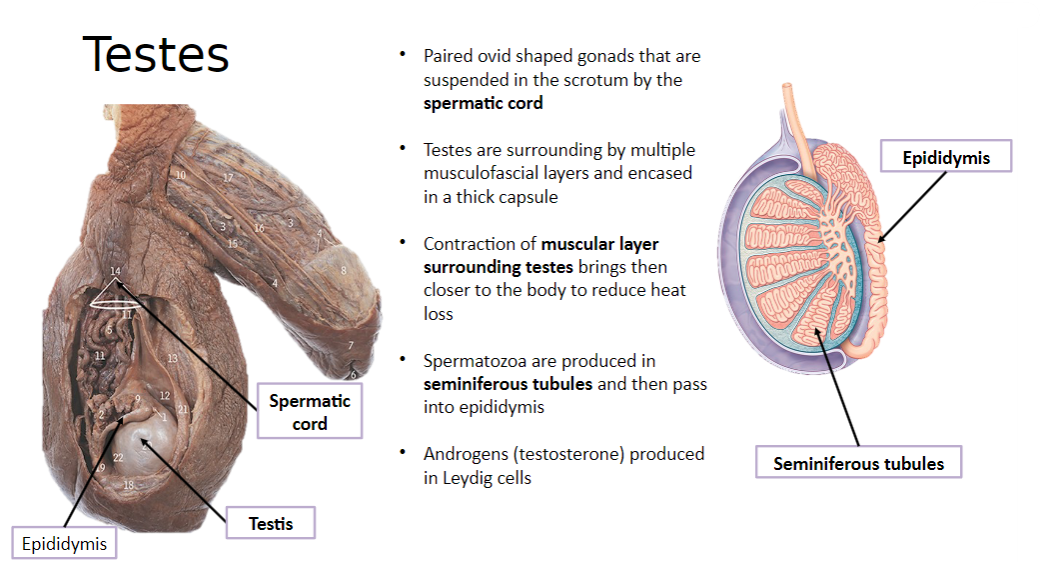
The Leydig cells in the testes produce androgens, such as testosterone.
What is the shape and structure of the epididymis?
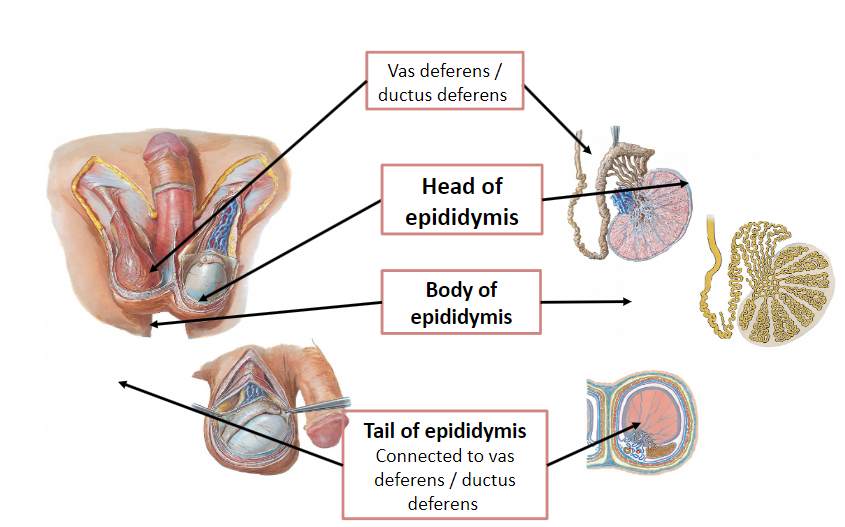
The epididymis is an elongated, comma-shaped structure formed of a long-coiled tube.
What does the epididymis receive from the testes?
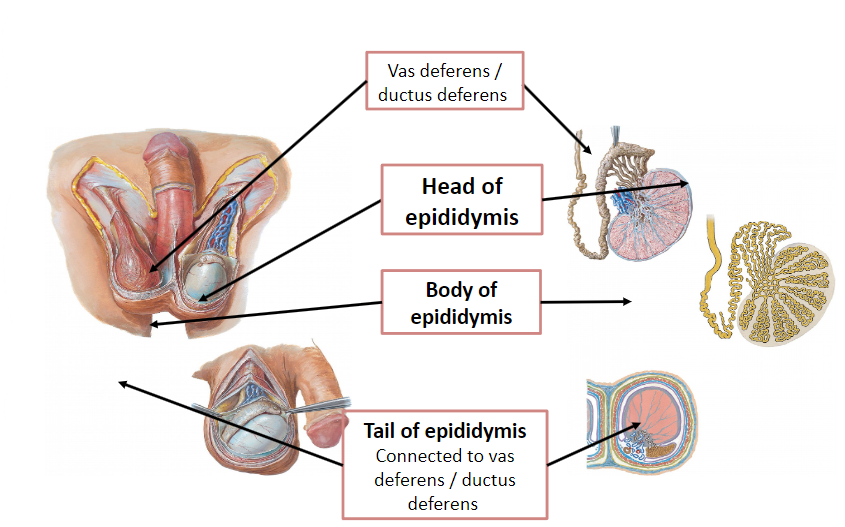
The epididymis receives spermatozoa from the testes.
What are the functions of the epididymis?
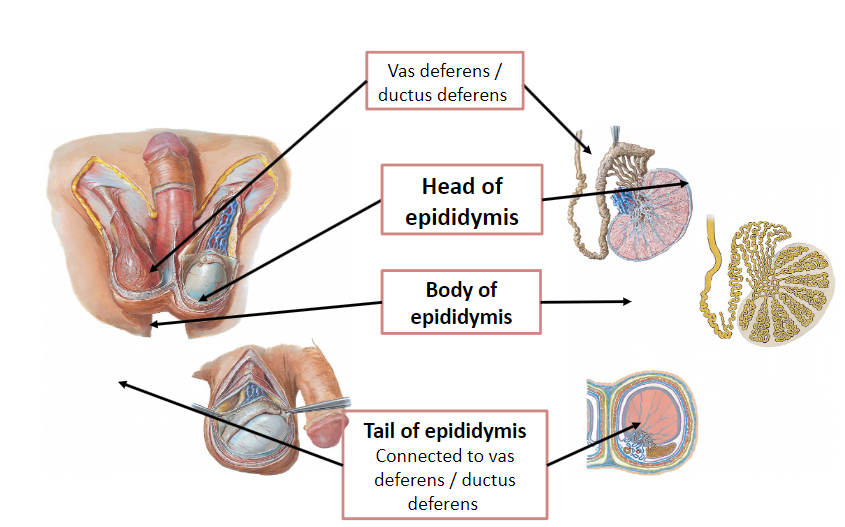
The epididymis functions to store and mature spermatozoa.
What does the vas deferens (ductus deferens) receive from the tail of the epididymis?
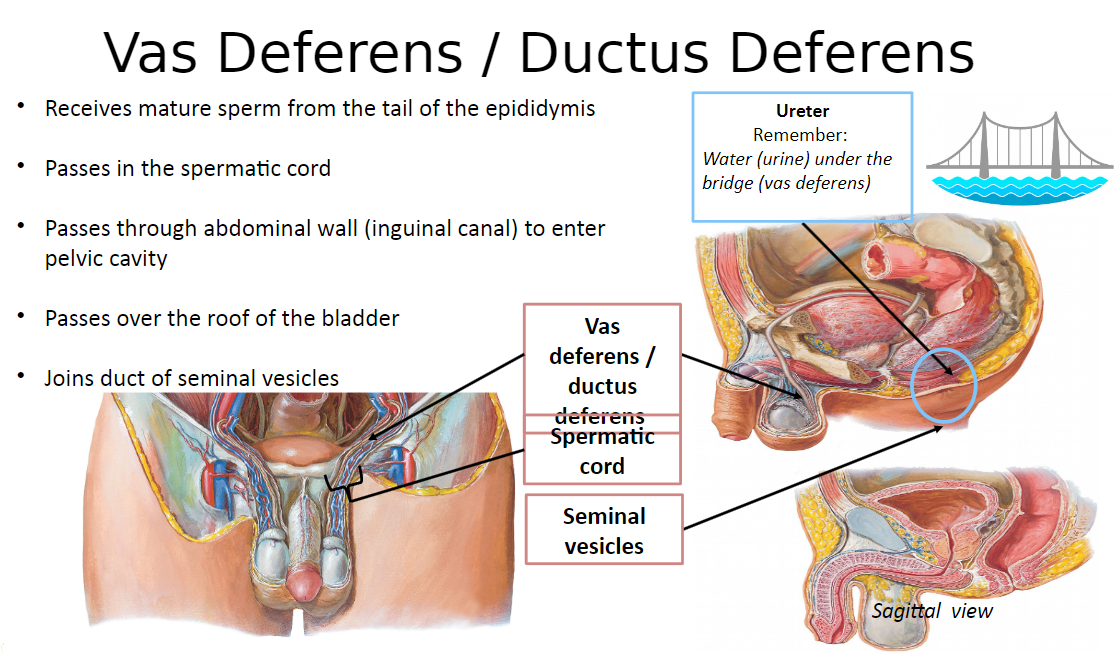
The vas deferens receives mature sperm from the tail of the epididymis.
Through what structure does the vas deferens pass?
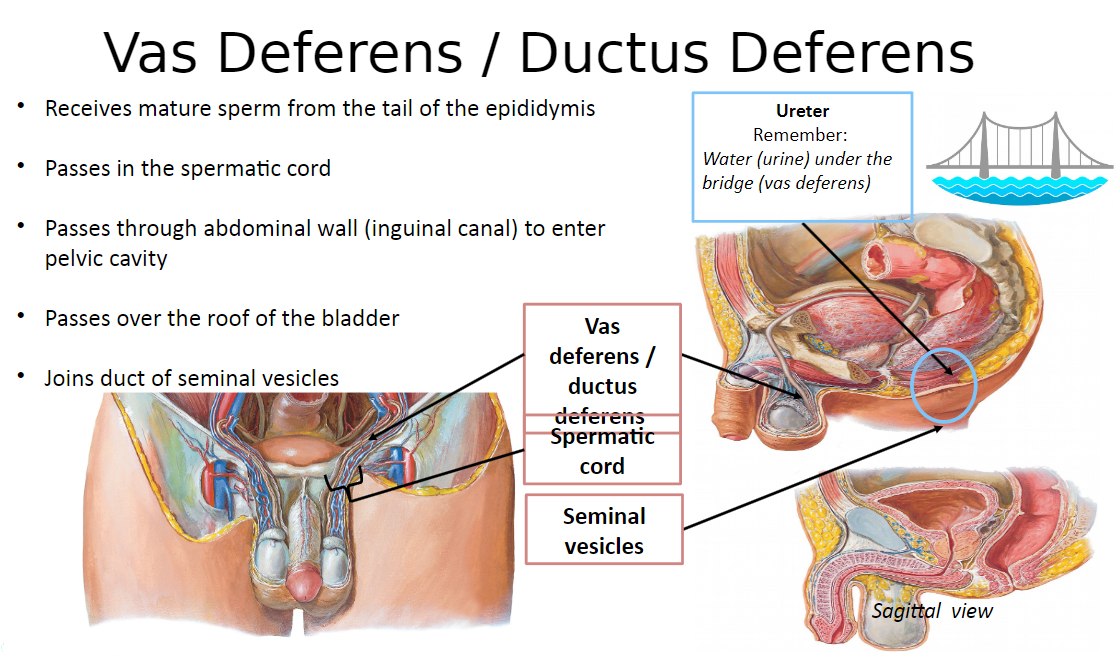
The vas deferens passes in the spermatic cord.
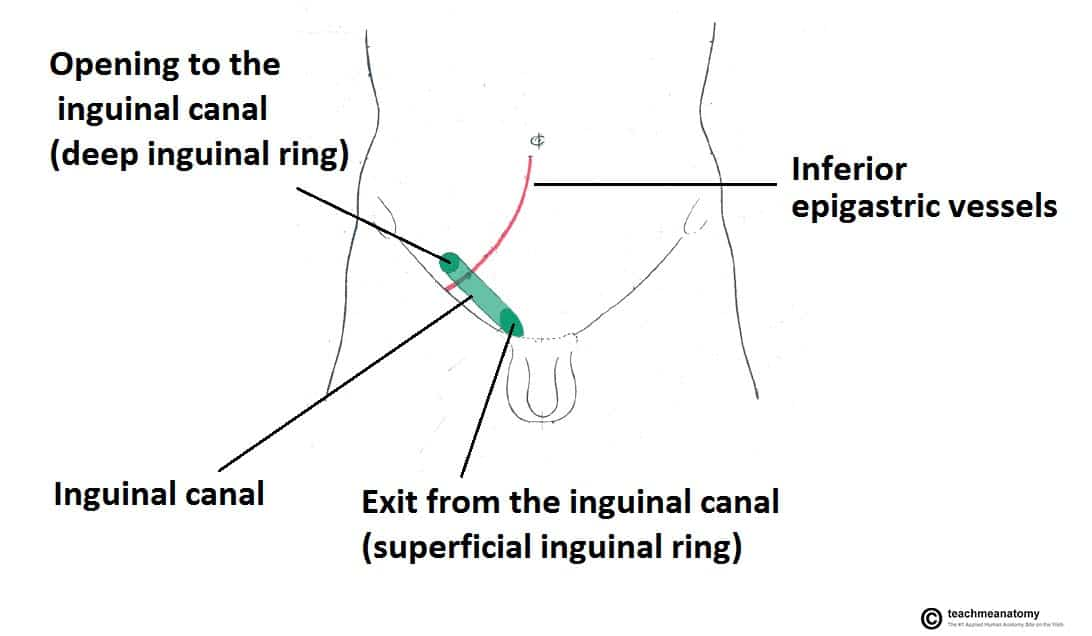
Through which canal does the vas deferens pass to enter the pelvic cavity?
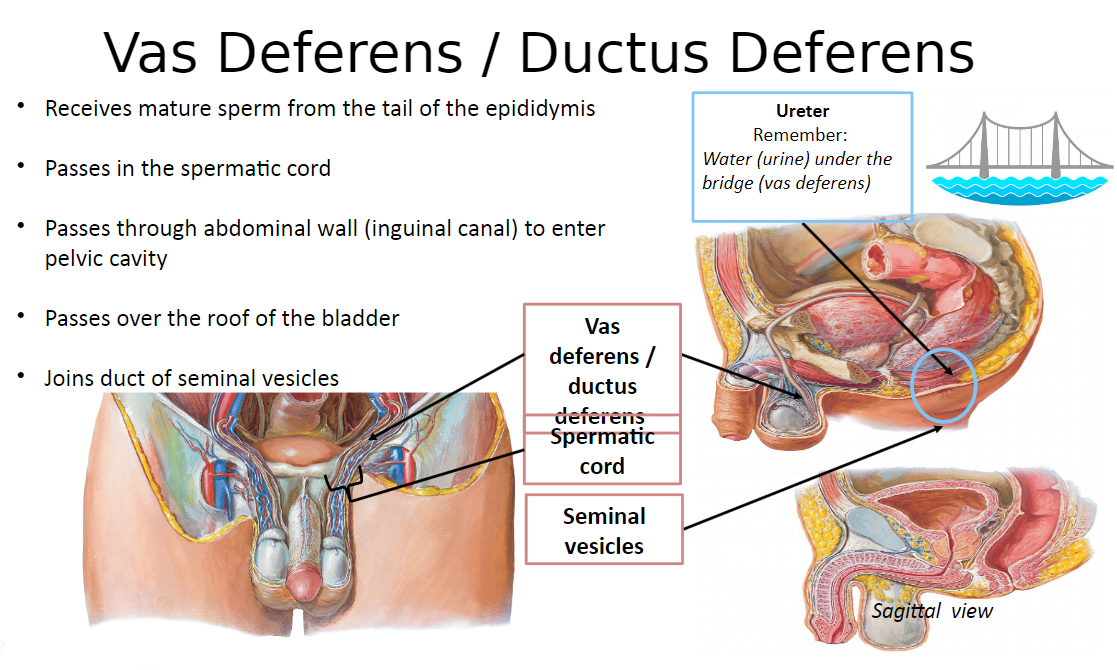
The vas deferens passes through the inguinal canal to enter the pelvic cavity.
Over which organ does the vas deferens pass?
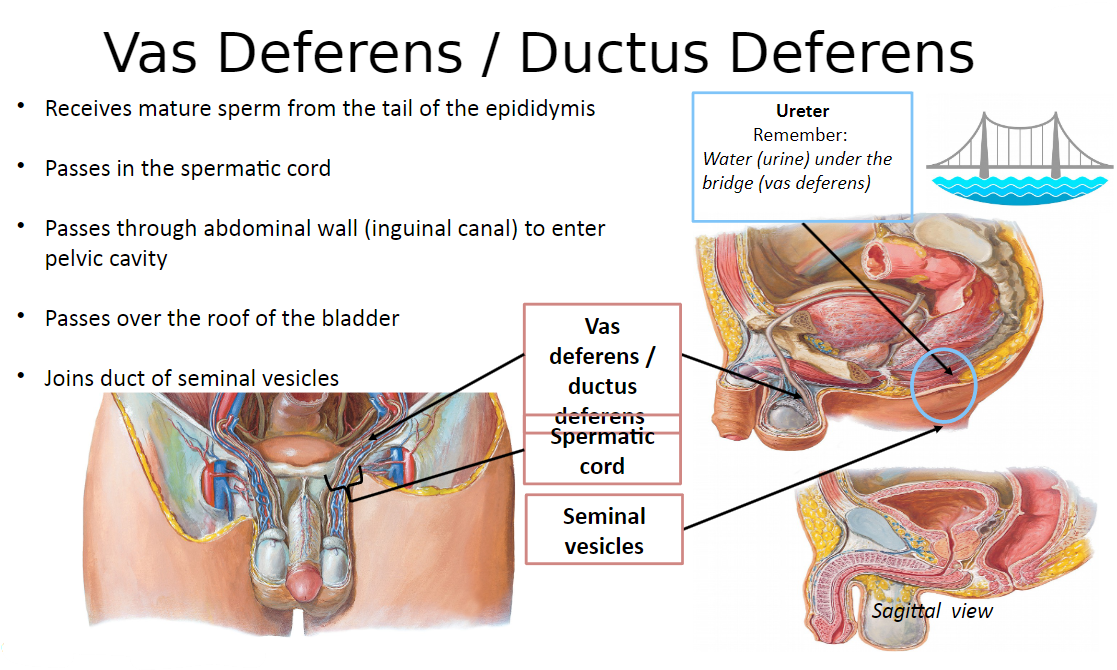
The vas deferens passes over the roof of the bladder.
With which duct does the vas deferens join?
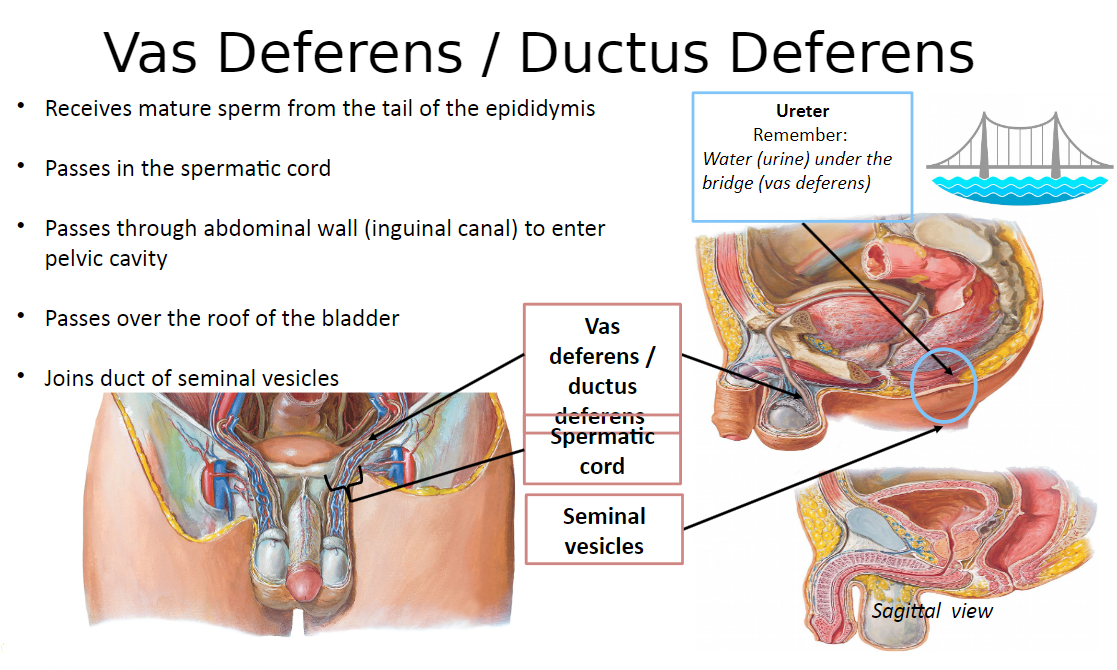
The vas deferens joins the duct of the seminal vesicles.
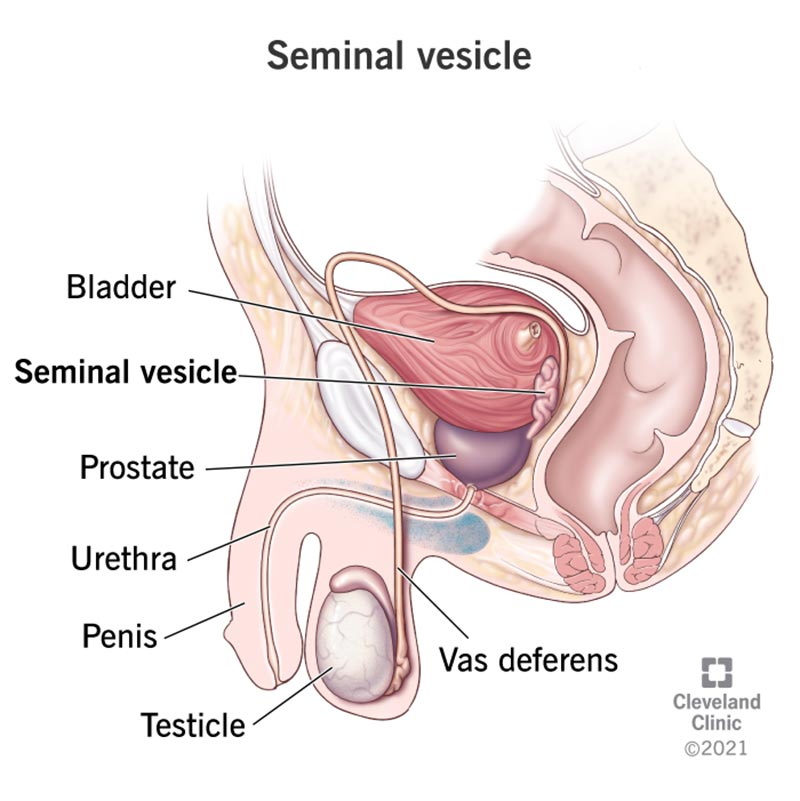
How is the ejaculatory duct formed?
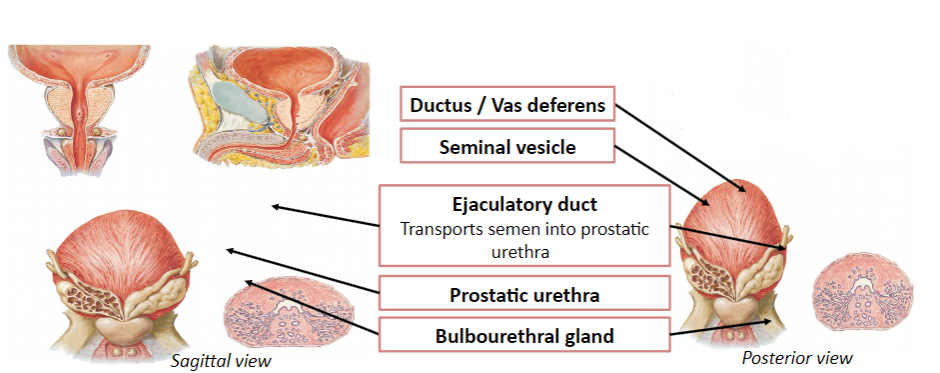
The ejaculatory duct is formed when the duct of the seminal vesicle joins the ductus (vas) deferens.
What is the function of the ejaculatory duct?
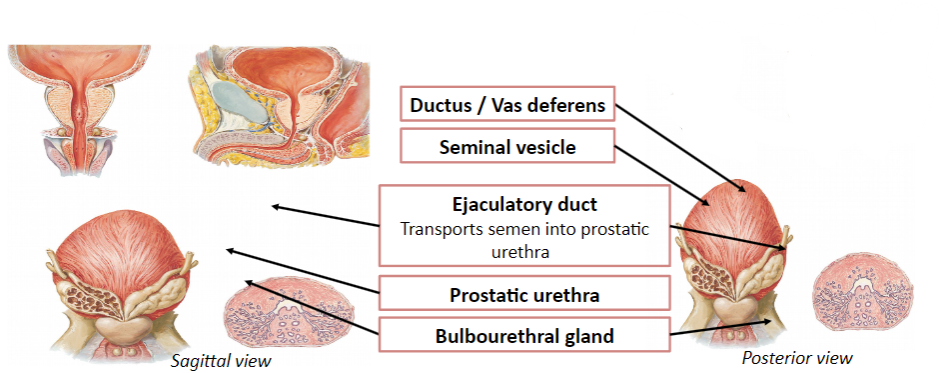
The ejaculatory duct transports semen into the prostatic urethra.
Picture demonstrating accessory reproductive glands:
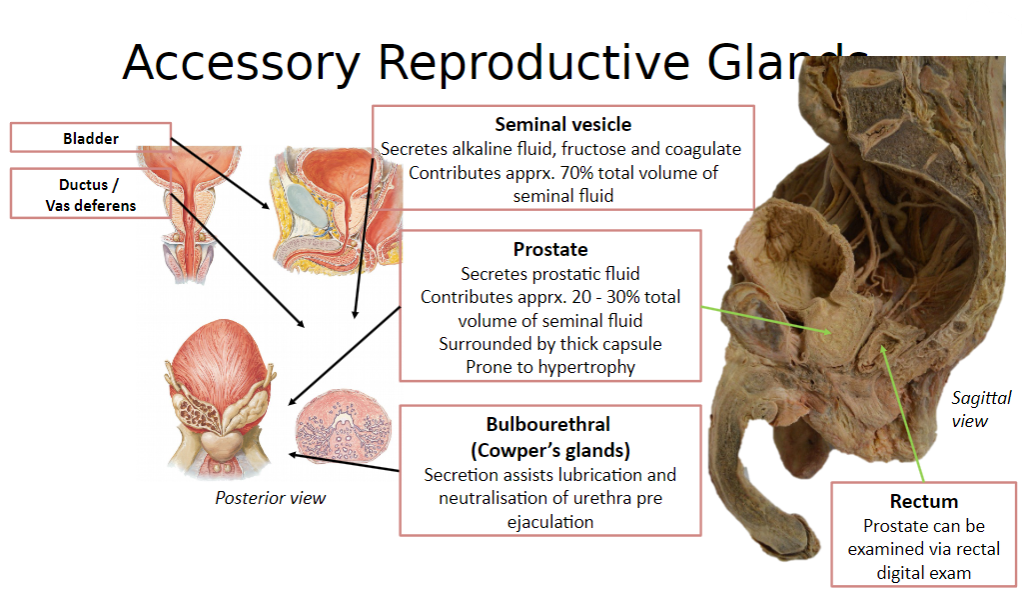
What are the functions of the penis?
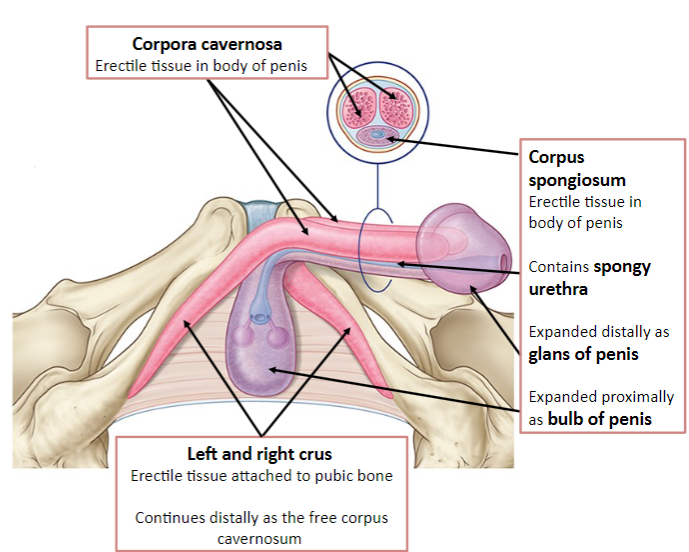
The penis serves as an outlet for semen and urine.
How many cylindrical bodies of erectile tissue does the penis consist of?
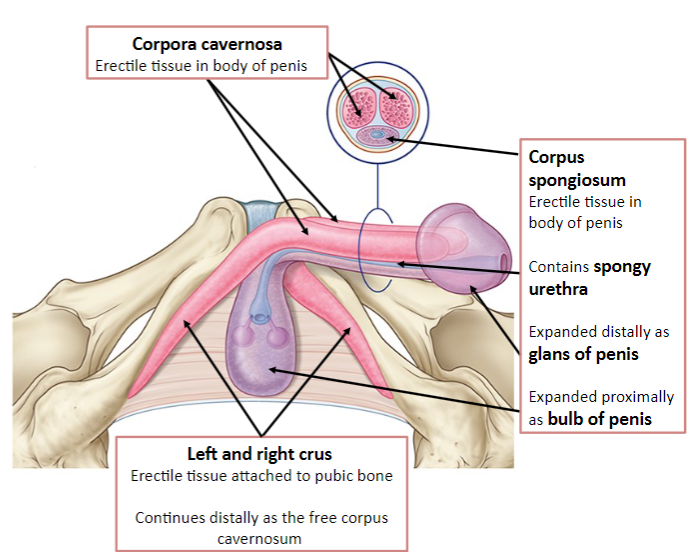
The penis consists of three cylindrical bodies of erectile tissue.
What are the names of the two paired cylindrical bodies of erectile tissue in the penis?
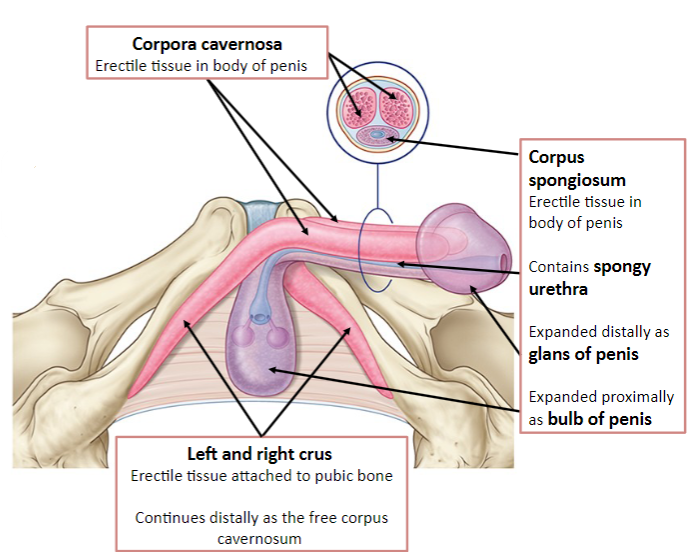
The two paired cylindrical bodies of erectile tissue are called corpora cavernosa.
From where do the corpora cavernosa arise?
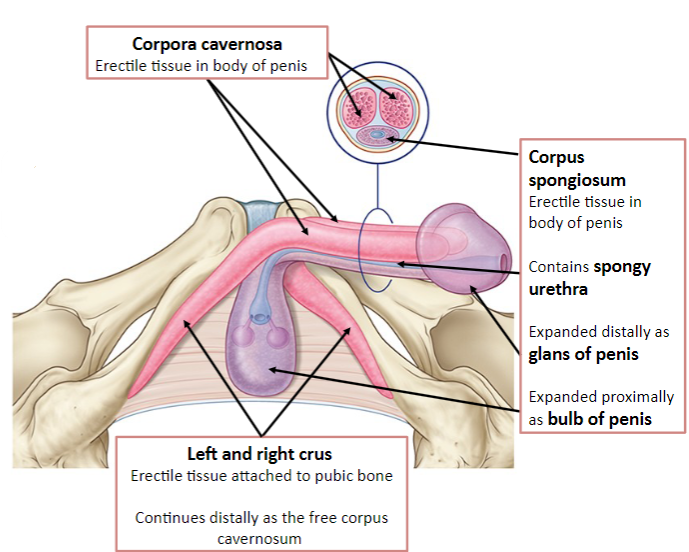
The corpora cavernosa arise from the left and right crus (crura, plural).
What is the name of the single cylindrical body of erectile tissue in the penis?
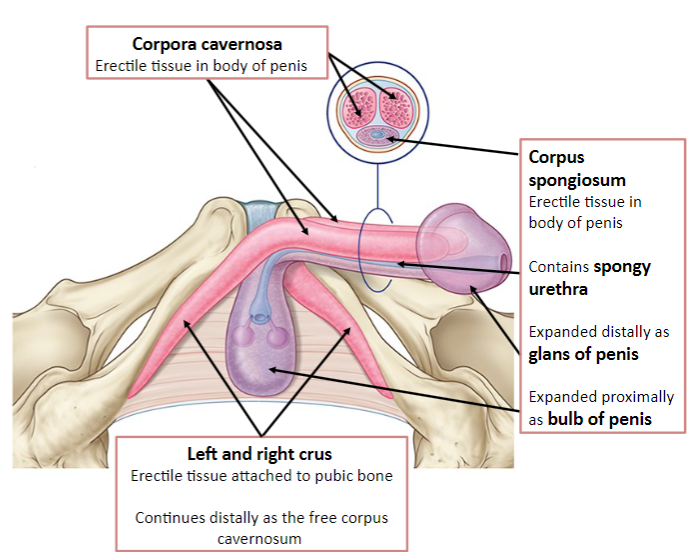
The single cylindrical body of erectile tissue is called the corpus spongiosum.
What does the corpus spongiosum contain?
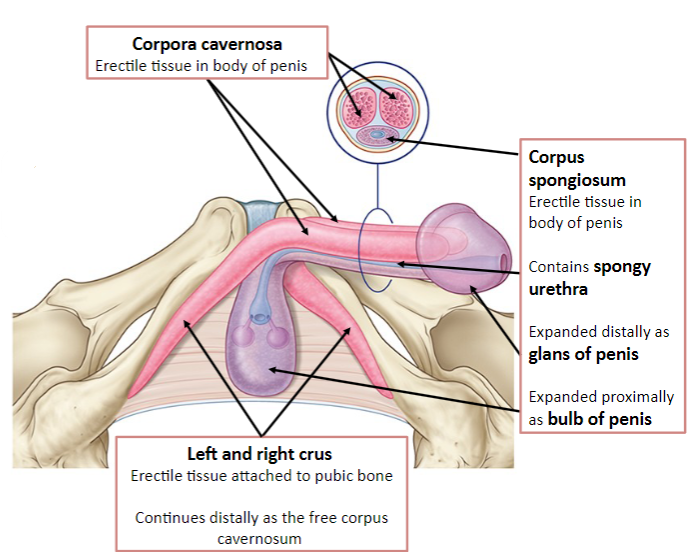
The corpus spongiosum contains the spongy urethra.
How does the corpus spongiosum expand distally and proximally?
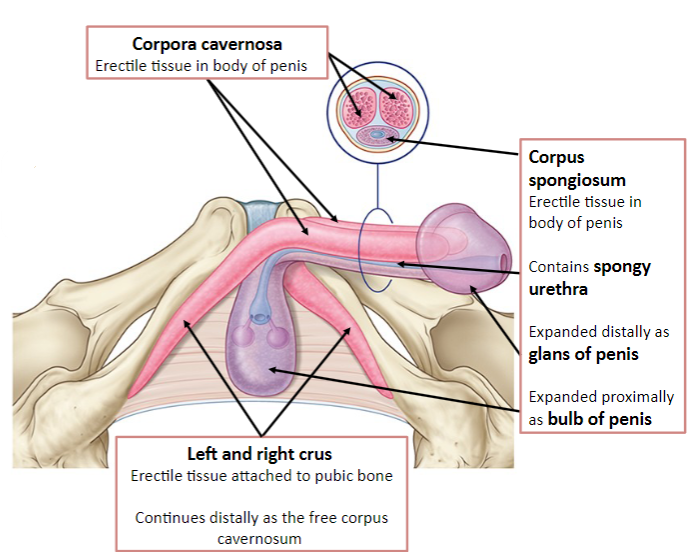
The corpus spongiosum expands distally as the glans and proximally as the bulb.
Another picture demonstrating the parts of the penis:
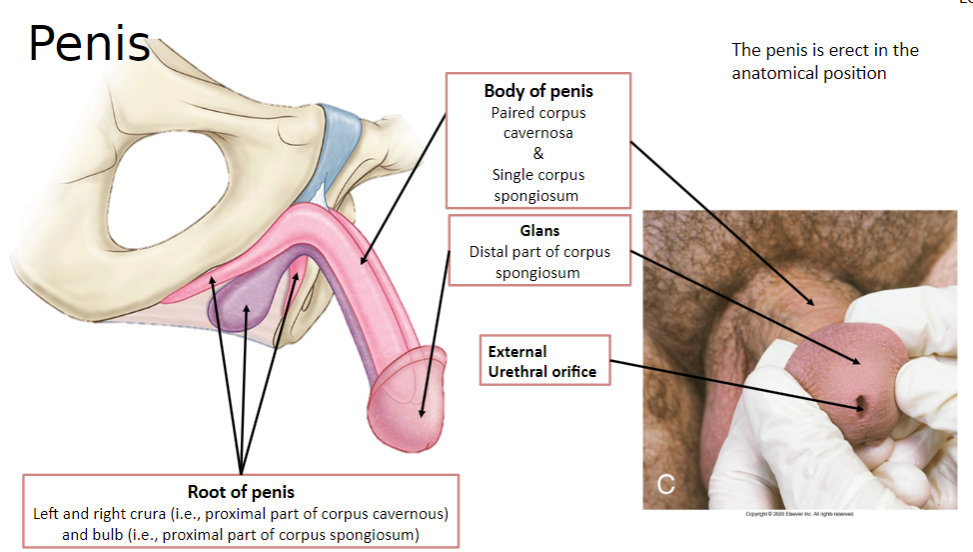
How is sex determined biologically?
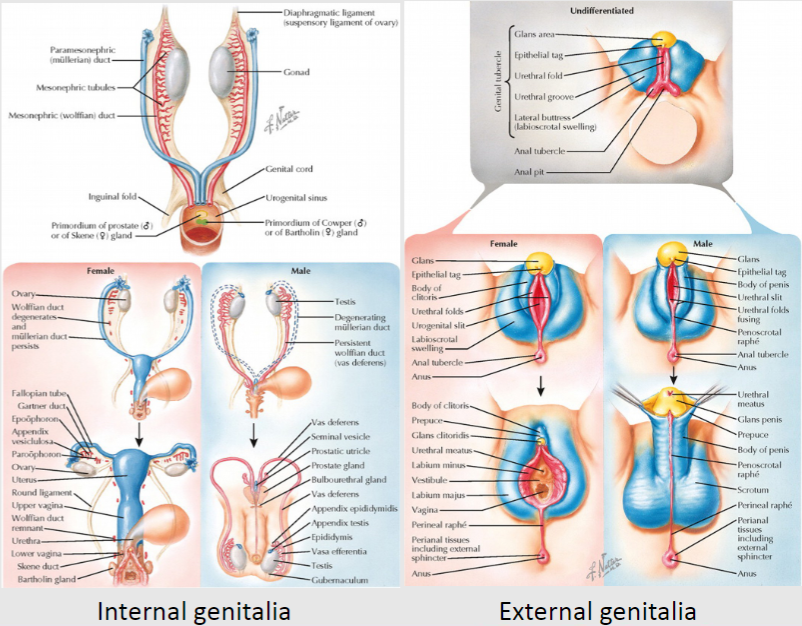
Sex is determined biologically by chromosomes, genes, and hormones.
What are the chromosome combinations for female and male?
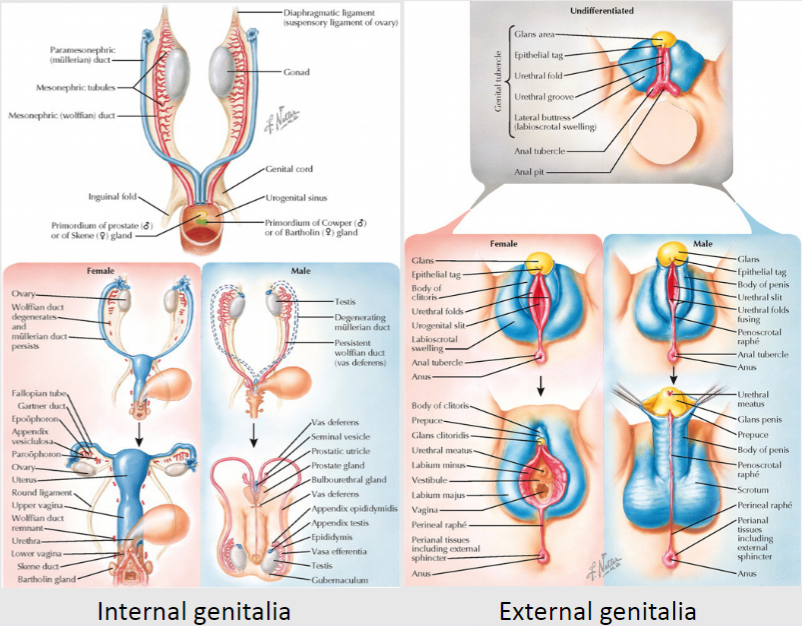
XX for female and XY for male.
Which gene is important for the determination of the Y chromosome?
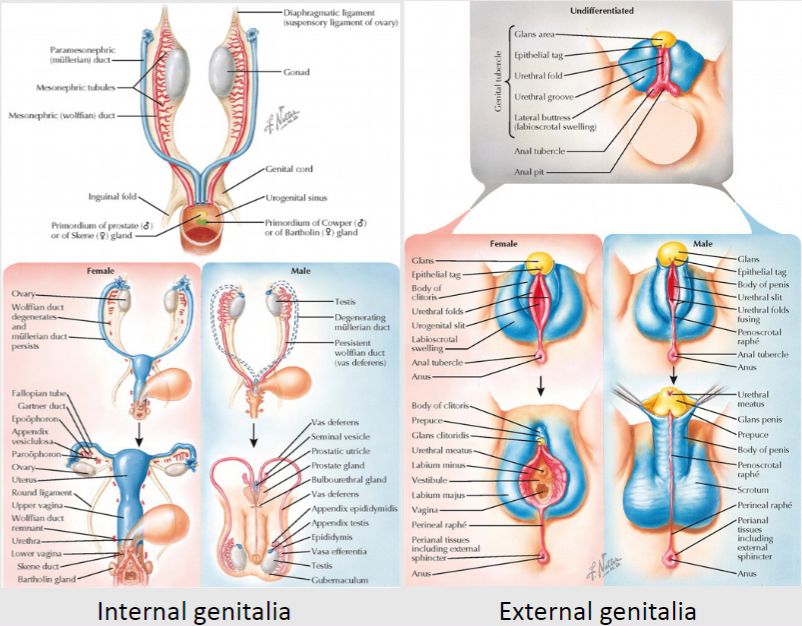
The SRY (Sex-determining Region Y) gene is important for the determination of the Y chromosome.
What are the fetal developmental structures involved in male reproductive system development?
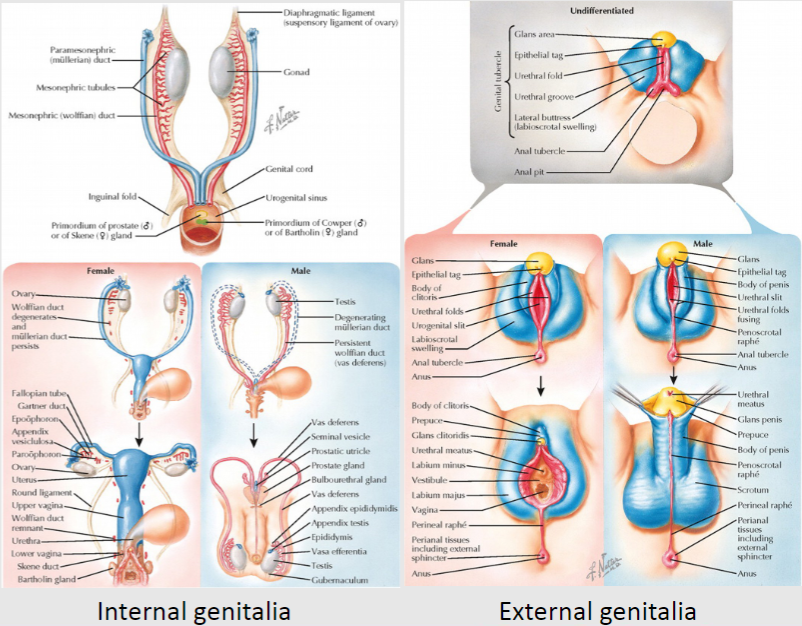
The mesonephric (Wolffian) ducts develop into the epididymis, vas deferens, ejaculatory duct, and seminal vesicle.
What are the fetal developmental structures involved in female reproductive system development?
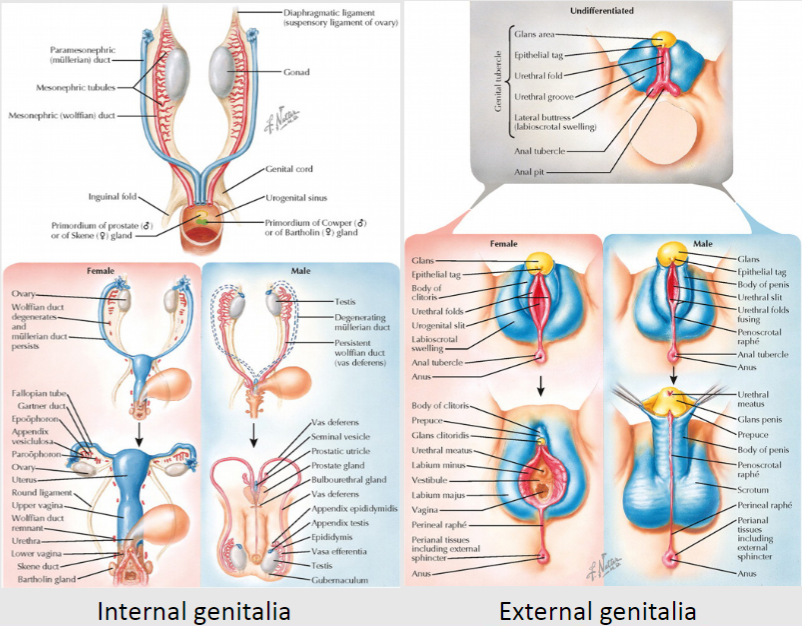
The paramesonephric (Mullerian) ducts develop into the uterine tube, uterus, cervix, and upper vagina.
What is another term for intersex conditions?
Intersex conditions are also known as disorders of sexual development.
What are some former terms for intersex conditions?
Formerly, intersex conditions were known as true or pseudohermaphroditism.
What are some characteristics of intersex conditions?
Characteristics of intersex conditions include chromosomal abnormalities, ambiguous genitalia, phenotypic sex anomalies, and true intersex states.
Biological sex will not always determine what.....?
Gender
Picture summary of this lecture:
